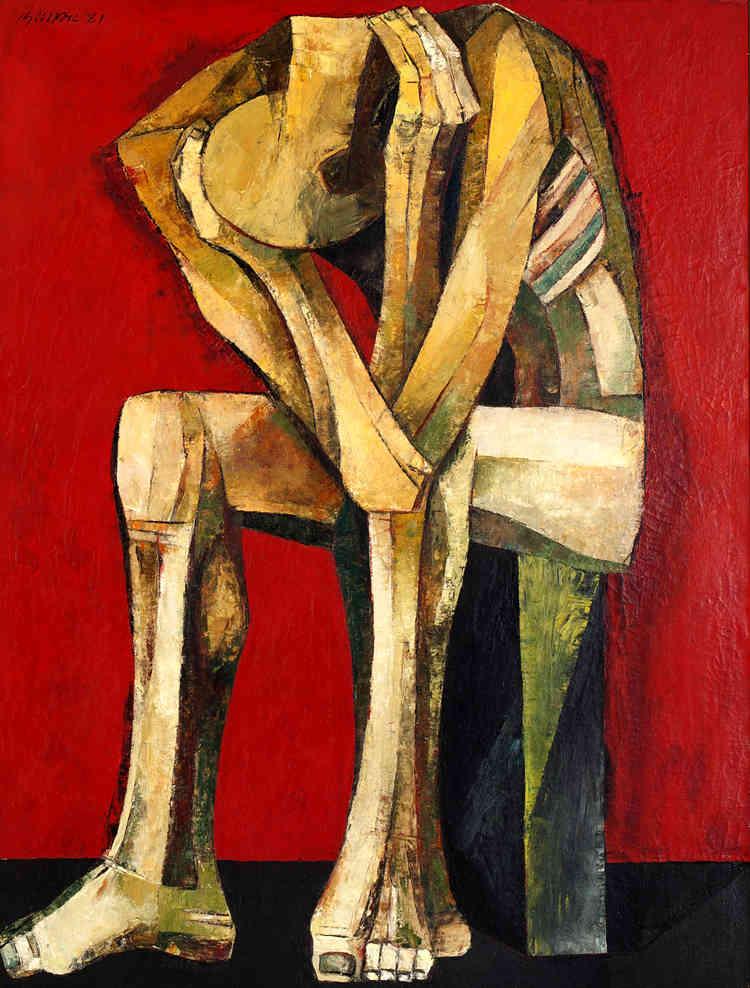
Premier SAPERE AUDE SEPTEMBER, 2022 ISSUE ISSN2799-0702 Vol 2 9
The Thinker, French Le Penseur, is a sculpture of a pensive nude male by French artist Auguste Rodin, one of his most well-known works. Many marble and bronze editions in several sizes were executed in Rodin?s lifetime and after, but the most famous version is the 6 foot (1.8 meter) bronze statue (commonly called a monumental) cast in 1904 that sits in the gardens of the Rodin Museum in Paris. The sizeable muscular figure has captivated audiences for decades in his moment of concentrated introspection.
The Thinker was initially called The Poet and was conceived as part of The Gates of Hell, originally a commission (1880) for a pair of bronze doors to a planned museum of decorative arts in Paris.Rodin chose his subject Dante?s Inferno from The Divine Comedy (c. 1308?21), and modeled a series of small clay figures that represented some of the poem?s tormented characters. The museum, however, was never constructed, and The Gates were never cast during Rodin?s lifetime. Some suggestions of his vision can be found in the original plaster exhibited at the Musée d?Orsay and in the doors made posthumously. In these examples, a 27.5-inch (70-cm) Poet appears on the tympanum above the doors The nude form is seated on a rock, his back hunched forward, brows furrowed, chin resting on his relaxed hand, and mouth thrust into his knuckles.Still and pensive, he observes the twisting figures of those suffering in the circles of Hell below. Some scholars suggest that the Poet was initially meant to represent Dante, but the muscular and bulky form contrasts with typical sculptures that depict the Poet as slender and lithe.
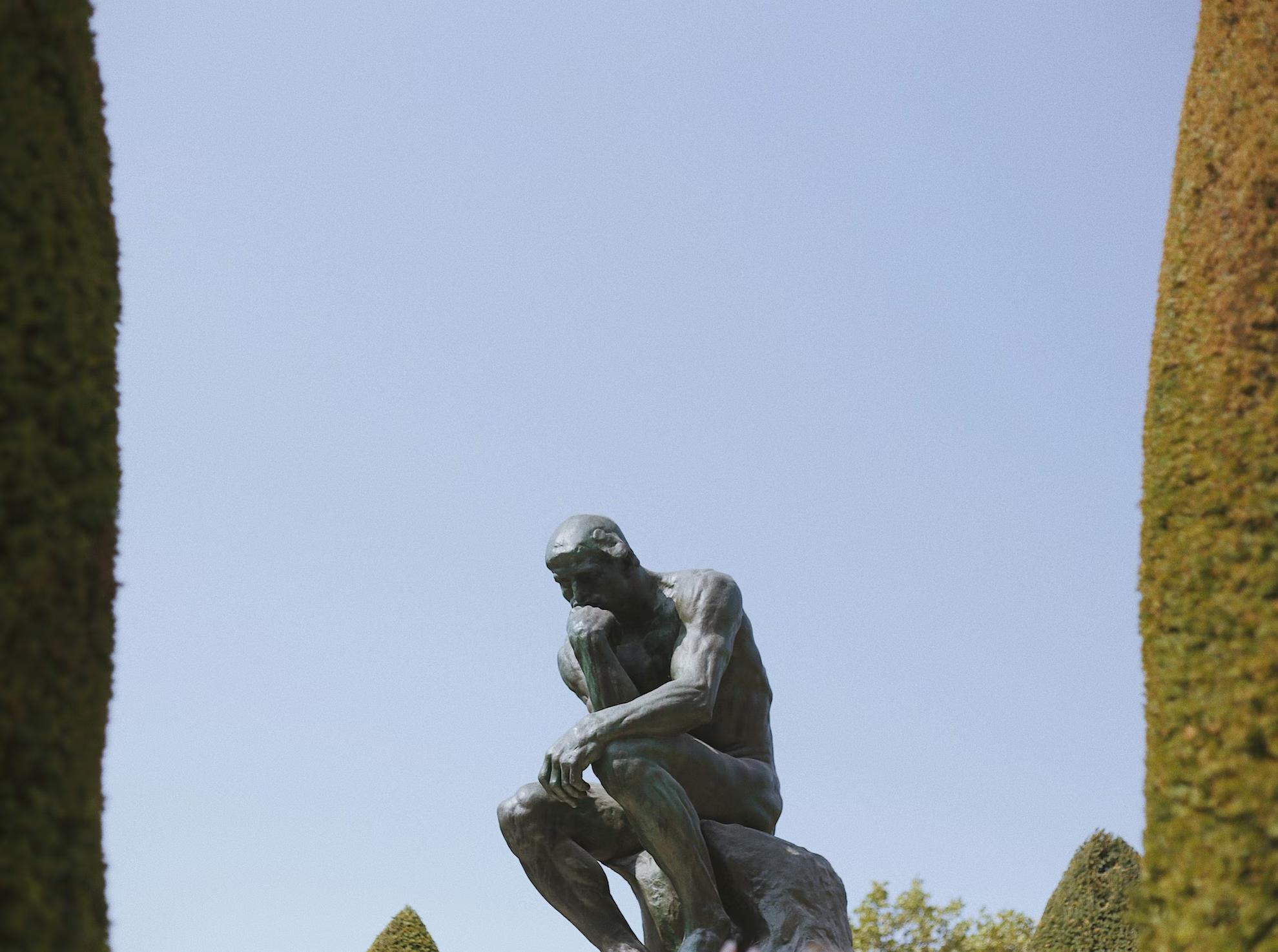
Rodin shows us that a great artist should be judged by what's in his head, and not what's in his hands.
ABOUT THECOVER
©AveryEvans
ANGKIUKOK's Thinking Man

This powerful painting showing a seated human figure engrossed in thought and set against an energetic crimson background is quintessential Ang Kiukok one of the leading lights of Philippine figurative expressionism. The painting is a highly charged presentation of contrasts, which is achieved by the rendition of the pictorial space as a smooth surface vis a vis the textured application of paint on the subject. The inner struggle that is presented here goes beyond the literal In as much as the human figure calls attention by its sheer size and position on the foreground, the vivid color behind the subject does not allow it to dominate visually, maintaining its own assertive presence
1981
Oil on canvas
81x 61cm (32 x 24 in)
Source:Salcedo Auctions
ABOUT THEARTIST
Ang Kiukok was a Filipino painter known for his expressive, Cubist like works. He often chose dynamic or disturbing subject matter, frequently depicting rabid dogs, crucifixions, and screaming figures in an abstracted geometric style When asked why he often chose subjects full of such anger he once replied "Why not? Open your eyes. Look around you. So much anger, sorrow, ugliness. And also madness." Born on March 1, 1931 in Davao City, the Philippines, Kiukok gained both critical and commercial success in his home country throughout the 1960s. Some of his most gruesome paintings were made during the rule of Ferdinand Marcos, who held the Phillipines under martial law throughout the 1970s. Kiukok was awarded the title of National Artist by his home country in 2001, and continued to exhibit with success until his death on May 9, 2005 in Quezon City,the Philippines - ARTNET
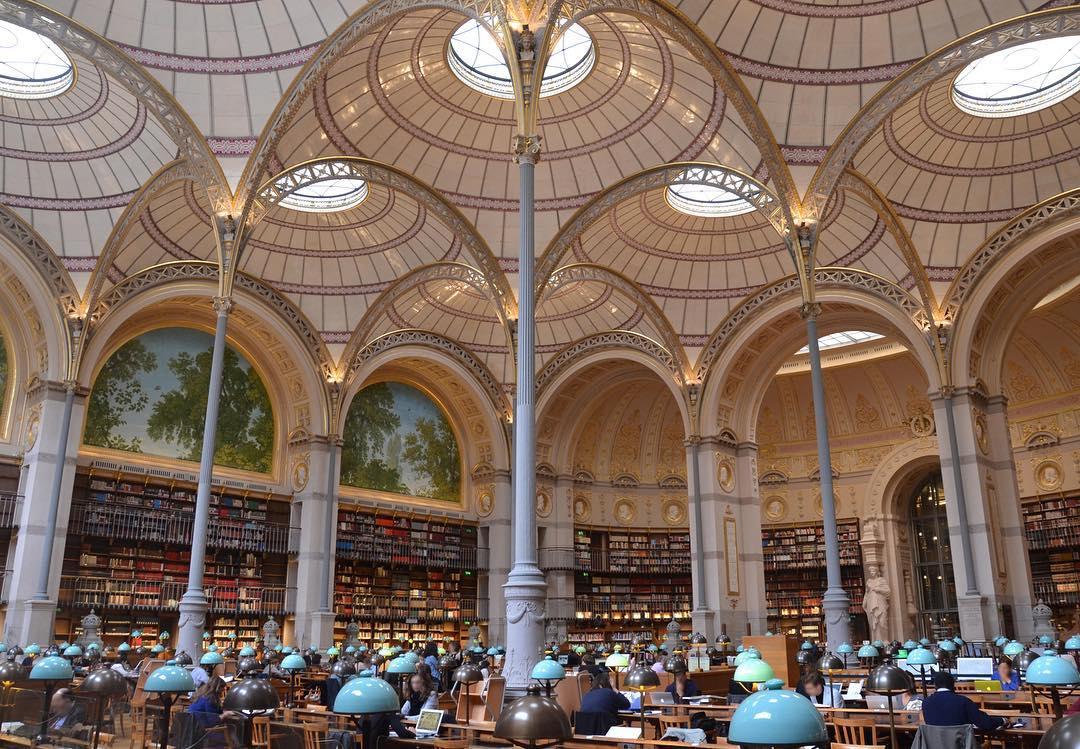
BEGIN WITH THEEND IN MIND
IN THISISSUE
We are on our 21st issue, and for a while, we thought sooner or later, we would run out of fresh ideas. But this is how we challenge ourselves. Almost always, the best ones arrive at the last hour. That exact moment when an average day becomes a red-letter day. And why not? We believe that creativity shouldn't be forced, so we stop for a while, do something more creative like play a mind game or two; listen to some old tunes that change the mood; cook lasagna or visit the salon; wait for the sunset, take a long walk or watch the entire world crumble on social media and immerse ourselves in some of the meaningless banters Afterward, the flow continues, and we can come back and reconnect all the random ideas together. That's what most people would call "the process." The unpredictable wave of thought when you have called it a day, then that Troy moment arrives when you return to the table and put the puzzle pieces together.Just.Like.That.
We have invited our friends from Paris to enlighten us about critical thinking; Evrim Emir Sayers is the founding and core faculty member of PICT (Paris Institute for Critical Thinking) along with her team. Expect to read more from them in future issues. Stephen Wilshire has long been recommended by one of our contributors from KSA, Weam Fageera, a subject she is more akin to. We have also highlighted the issue of neurodiversity with Jeff Miller, the Founder, and CEO of Potentia. These are just a few of what's in store for our readers. We encourage you to reach out and take part in sharing your story
To the global citizens and organizations who continue to support Premier, we are more than grateful for your share of knowledge, talent, and time You inspire us even more It's an honor to face these trying times, knowing we become better humans when we work together. More than anything, thank you for your continued trust and cheers to more partnerships!
 Photo Courtesyof PICT
The Publisher
Photo Courtesyof PICT
The Publisher
PICT, or the Paris Institute for Critical Thinking, is a volunteer-run, non-profit educational institute financially supported by a growing global community of members. Thanks to its members?contributions, PICT can organize free courses and events and expand its free, open-access library of resources, including podcasts, videos, and articles.PICT membership starts from 3 euros a month and is open to anyone from around the world who wants to join this global, critical community. Evrim Emir Sayers, the founding and core faculty member of PICT, shared some of her time with us for a brief tete-a-tete.

We would like to get to know more about PICT. How did the institution come about?
We are an international collective of educators, researchers, writers, and artists who are united by our love for the humanities and by our desire to bring the humanities closer to people?s everyday lives. Many of us also teach at universities, but we believe that interests like philosophy, history, literature, or cinema enrich our lives at every stage and should not be reduced to a few university courses which are, in any case, onlyaccessible to a certaingroup of people at a certain age.
This is why we founded PICT? we wanted to create a space where everyone with an interest in the humanities, no matter their age, profession, or educational background, can find kindred spirits in pursuit of similar questions. We believe in education as a public service, not as a for-profit venture, so we created PICT as a non-profit associationunderFrenchlaw,and ourentire administrative work isdone byvolunteers. We also believe that education should be independent, so we accept no corporate or state sponsorship and rely solely on the financial contributions of our individual members.
We started by offering free public lecturesand a number of coursesthat are designed like graduate seminars at universities? maximum ten people per course, lots of opportunity for participation and discussion, and in-depth engagement with a specific topic such as a philosophical work or a genre of cinema. But as opposed to graduate seminars, our courses don? t follow a certain curriculum, so our instructors can pick their topics according to their own passionate interests. Also, our courses do not lead to grades, credits, or diplomas, which means we only get participants with a genuine curiosityforthe topic.
When pandemic restrictions made in-person teaching impossible, we did not go into online teaching, which we don? t regard as an adequate substitute for face-to-face interaction. Instead, we started publishing free, open-access articles and podcasts, which can be put online without compromising quality. Thanks to this growing online library of resources, we were able to connect with many like-minded people around the world who would never have been able to come to a PICT event in person. Today, we organize in-person courses, public lectures, and conferences? mostly in Paris, France? as well as publishing various podcast series, blogs, and dePICTions, our own annual critical review.
Courses and Events
PICT organizes a colorful program of courses and events: Public lectures and conferences; Courses in the humanities and arts; Creative writing workshops; Children?s ateliers in chess, drawing, and music; Educational walking tours in Paris
PICT welcomes participants from all backgrounds, regardless of age or education level. All PICT courses are in person and capped at max 10 participants

©Mbzt
Critical thinking is uncommon to learners and students; what made you focus on this?

It isso interesting that you saycritical thinking isuncommon,when, in fact, it should be the central goal of education! But when most people think about education? and sadly, this includes most universities as well? they imagine some kind of training: something that you do, often quite joylessly, to acquire some specific skill that you will use at some point in life, most probably in order to make some money. This kind of instrumentalized, means-to-an-end approach to education is actually the opposite of critical thinking.
We love the humanities because they don? t let themselves be reduced to facts, numbers, or ?learning outcomes,?asso manycourse summariesput it.The humanities are all about a rigorous but open-ended engagement with subjects such as philosophy or art, subjects in which questions rarely have a final answer. The humanities are all about the process of thinking rather than its outcome. The humanities have the power to unite people, bring the most diverse groups of people together around questions and issues that are of passionate interest to us all as humanbeings.All thisiswhythe humanitiesare the natural home of critical thinking.
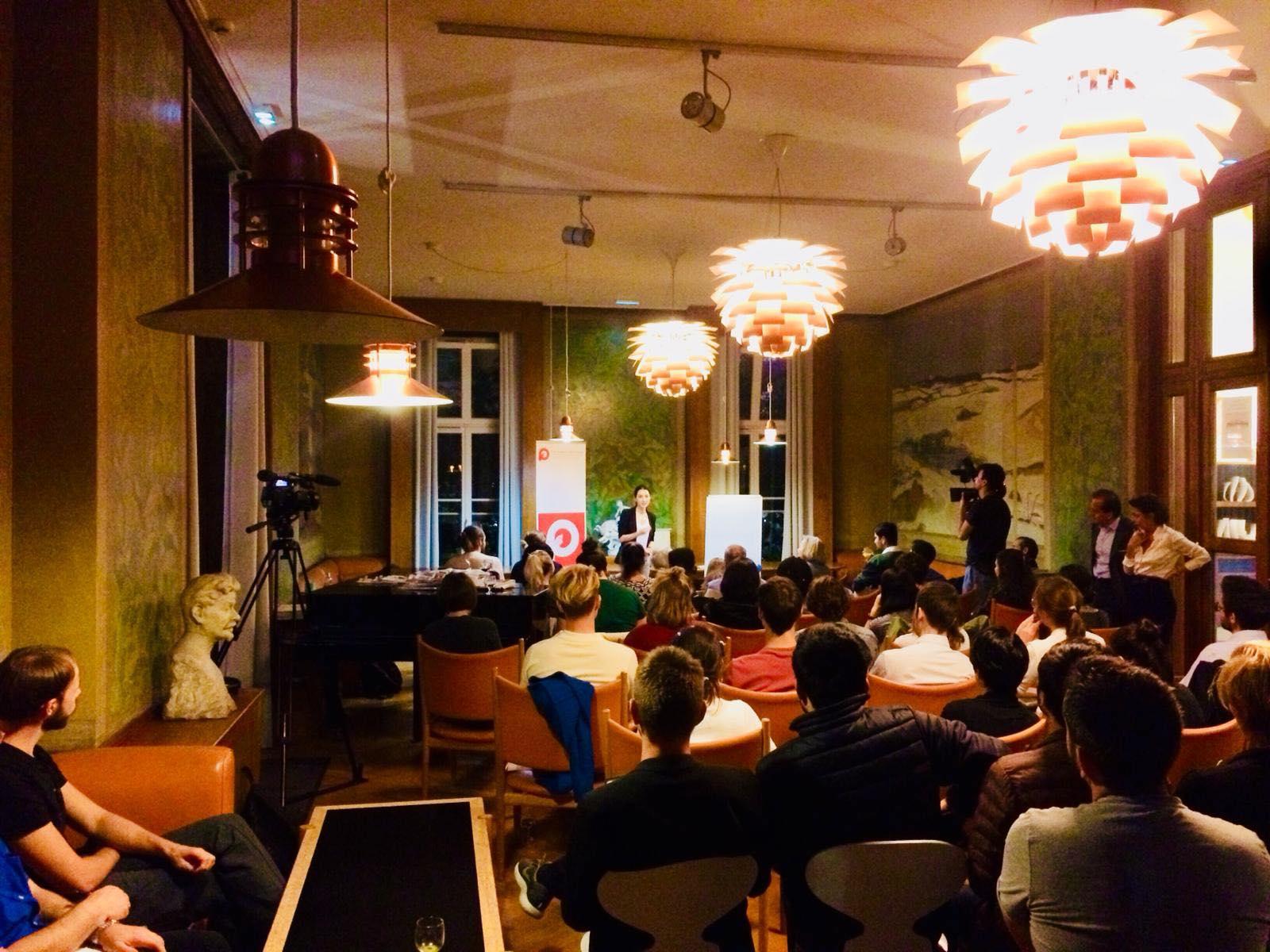 ©Juni MarieBenjaminsen
©Juni MarieBenjaminsen
PICT is a ?young? institution; most universities always highlight their seniority and ranking in the field of education. What drove PICT to continue amidst everything that has been happening now regarding the economy?
Well, we are not a university, and we don? t want to be! The constant insistence on seniorityand ranking that you so correctlymention is, forus, one of the main problems with education today. This insistence creates a culture of hierarchy not only between different universities, but also between administrators and professors, professors and students, students of different years, and people who have a university education and those who don?t.We think of educationassomething that should bring ustogether,not something that should divide usinto categoriesand ranks.
At PICT, rather than create a hierarchical administrative structure, we make our decisionstogetherinananarchic way.We also have a veryflexible attitude that allows usto evolve the institute in whatever direction seemsmost appropriate at the moment, for instance when we started creating open-access resources such as podcasts and articles during the pandemic. We want to retain this youthful spirit of anarchism, curiosity,and exploration.
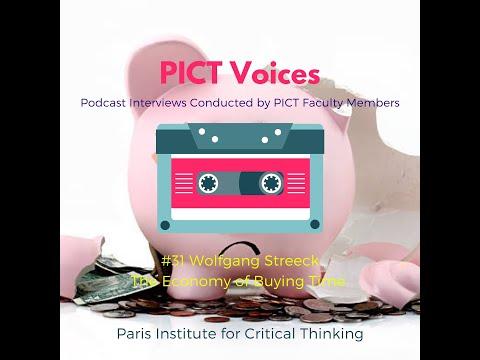

What obstacles are you currently facing, and what are your plans?
Ourmost immediate planisto make everything at PICT absolutelyfree forall ourmembers.All ouronline resources,suchasarticlesand podcasts,are already free and open-access.Ourpublic lecturesare free, and we also organize a numberof free courseseach academic year.But we still charge enrollment feesfor most of ourcourses,simplybecause we want to give ourinstructorsfaircompensation.
Ourcurrent goal isto get rid of these enrollment fees. If ourcoursesare opento all people regardlessof age oreducationlevel,theyshould also be opento all people regardlessof income orwealth.Thisiswhywe are inthe processof shifting from enrollment to membership fees.PICTmembership startsfrom 3 eurosa month,and the support of ourcurrent membershasalreadyenabled usto lowerthe feesfor most of ourcoursesbymore than half.Once we reach 1000 members,we will be able to make all our coursesfree while still offering ourinstructorsthe compensationtheydeserve? aswell asourauthors and podcasters,who are producing PICT?s open-accessonline resourcesentirelyforfree right now.
We want to give the lie to the so-called ?education industry,?whichwould have usbelieve that the kind of service provided byPICT isonlypossible if educational institutionsaim forfinancial profit,are runin a hierarchical way,exclude learnersonthe basisof arbitrarycriteria such asage,and make themselves dependent onstate and corporate funding.Ourvery existence provesthat none of thisistrue.To date,we have taught around 60 courses,organized more than 20 public lecturesand conferences,and published over120 podcasts,videos,and articles.We have done all thiswithout receiving a single pennyfrom a state, corporation,orotherfunding body,solelythanksto ourmembers?support of ourvolunteerwork.PICTis living proof that education asa public good,directly supported byand aimed at the general public,isnot onlypossible but infinitelypreferable.
Ulitmately,we would like to set anexample forothers to follow.What we do inPariscanbe done anywhere around the world.We want to hearfrom the PhilippinesInstitute forCritical Thinking!
Parisian bookseller in the streets of Paris near the banks of the Seine near the Quai Saint Michel streets.
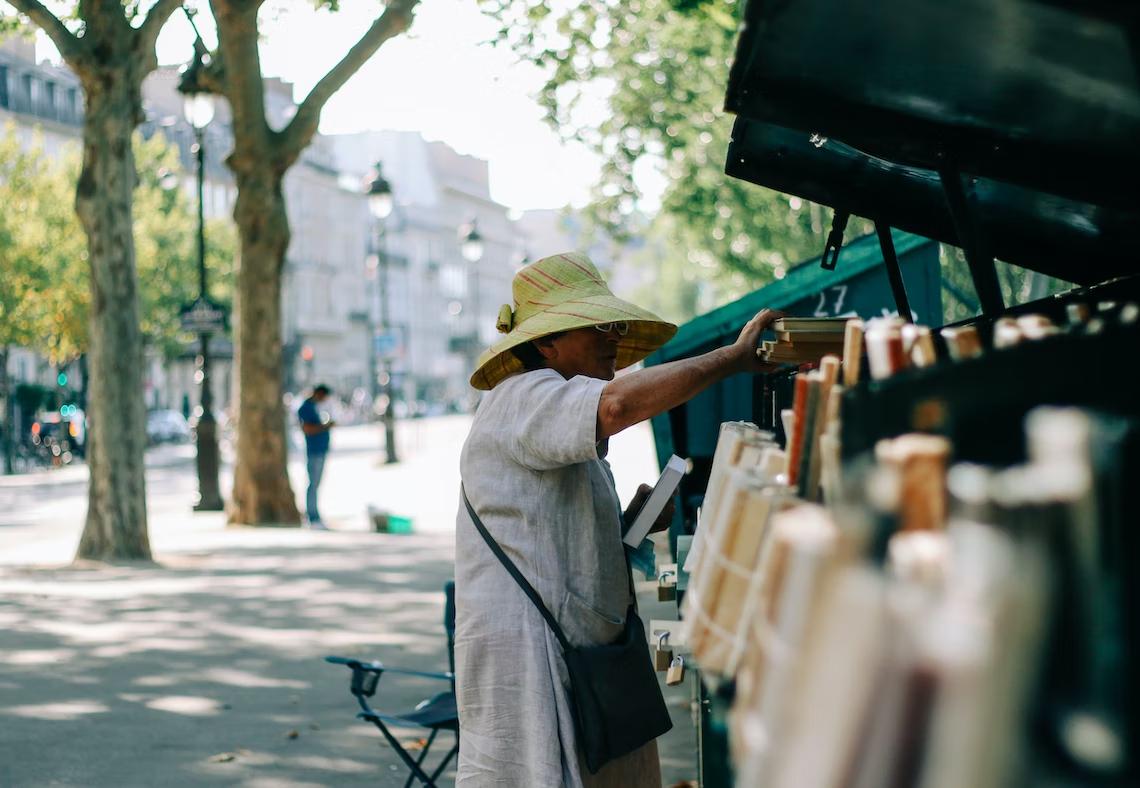 ©EddieJunior
©EddieJunior
They say that social media is like a terrible dragon that flies over everyone and takes over people?s lives. What is your stance on this?
Social media canbe a verypowerful tool forpeople to directlyfind eachother,oranything theyare looking for,without the intermediacyof some institutional gatekeeper.If not forsocial media,you probablynever would have heard about ourwork,and neitherwould manyotherpeople around the world.But we should keep in mind that most social media platformsare private,for-profit enterprises.Yourvisibilityand voice onthese platformsare controlled bythe platform?s owners.We are not just talking about politically motivated censorship,but the simple fact that the platform canartificiallyrestrict youroutreach,only allowing you to reachasmanypeople asyou are prepared to payfor.We have come to regard social media asa public good,and asa public good,we believe it should be taken out of private handsand controlled bythe public.
You favor face-to-face or actual interaction over online learning. Why is this?
Aswe were just saying,the internet hasmany advantages.Replacing face-to-face interactionisnot one of them.We believe that anessential component of education? itssoul,if you will? onlyemergesin face-to-face interaction,in the flow of energyand exchange that happensina room full of people who are willing to challenge and support eachotherina spirit of curiosityand solidarity.We do not believe this magic canbe recreated online.Thisiswhy,throughout the pandemic,we suspended ourcourse program ratherthanshift to so-called ?online teaching.?But that doesn? t meanwe are opposed in principle to people getting togetheronline.Forinstance,our Student Ambassadors,who are highereducation studentsfrom around the world,organize online workshopswhere theyinvite intellectualsto discuss theirwork ina small group that hasstudied the work in advance and prepared questions.Thiskind of trans-continental get-togetherwould be verydifficult, if not impossible,face to face,so in thiscontext, ?online learning?canwork quite well.

"People will always be interested in people"Jimmy Westerheim credits the success of this project to the nature of the human being as a social creature. We are inextricably bound to others, some directly and many less so.As John Donne once wrote, "No man is an island."THA continues to run on honesty, directness, and earnestness that creates interest in people on all sides from the people willing to be interviewed to the people who volunteer their time in The Human Aspect and, of course,to us, as readers and watchers, intrigued by the message and purpose of it
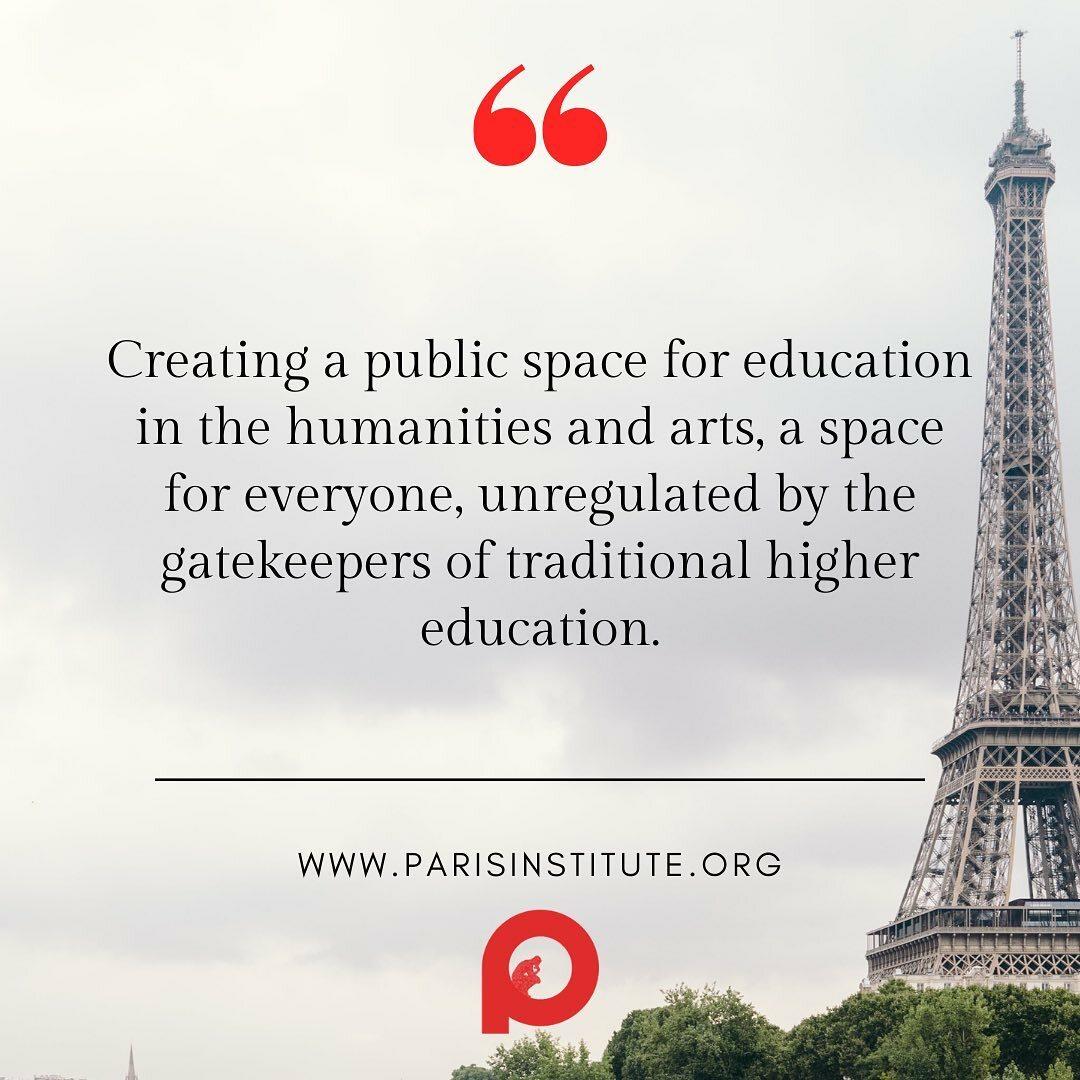
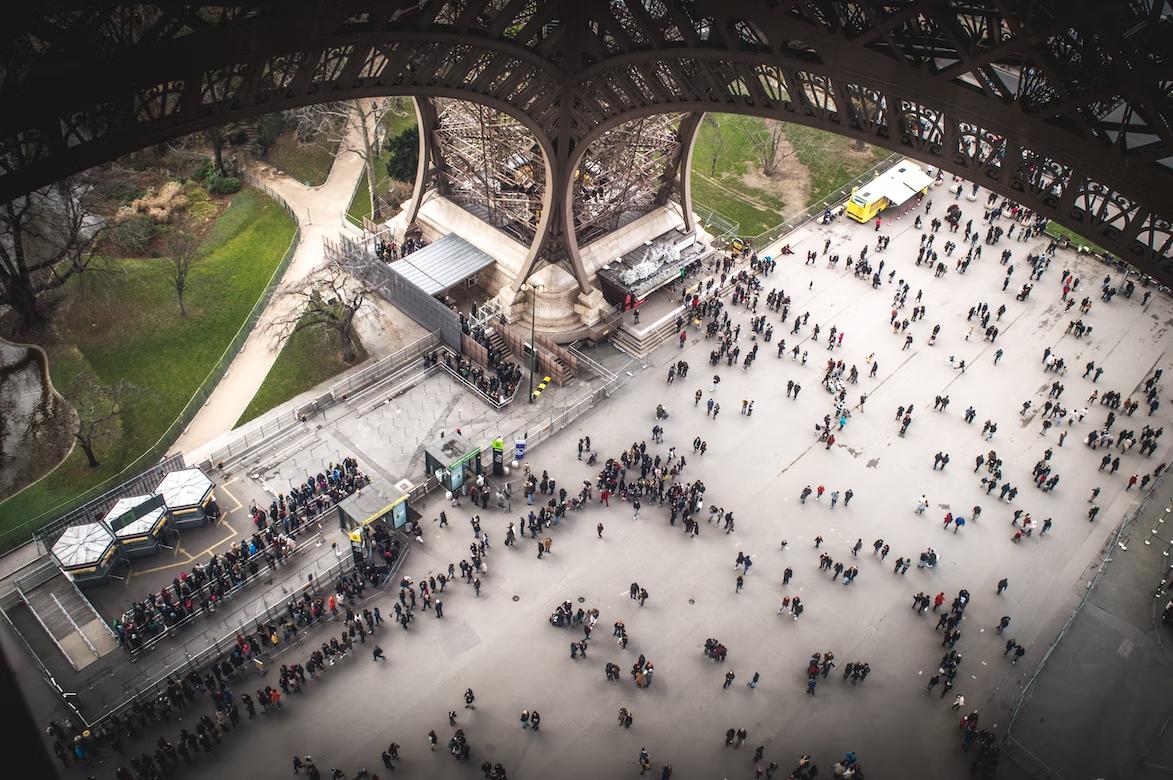
The future of The Human Aspect is to continue doing what they're already doing and to expand into creating User Guides for professionals using The Life Experience Library with their clients. They want to increase awareness and understanding of mental health through education efforts in our schools and used by teachers. Critically, they are increasing their ability to provide local mental health resources to those who ask for them and to increase accessibility by developing audio versions of all their interviews
 ©ChrisKaridis
An alternativeview of theEiffel Tower
©ChrisKaridis
An alternativeview of theEiffel Tower
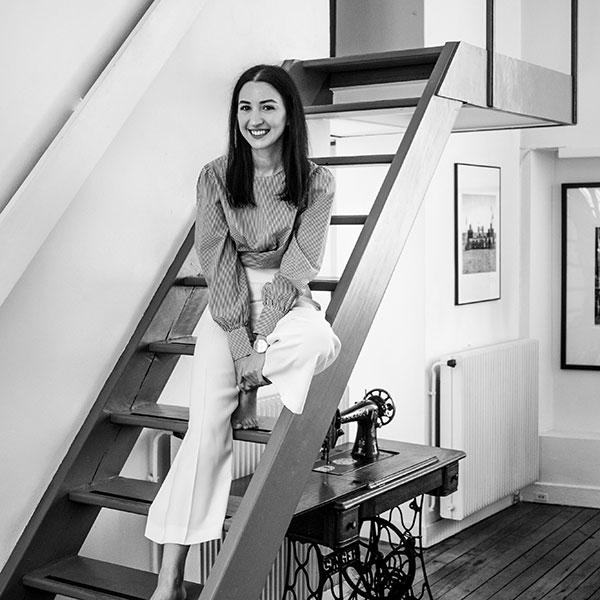
EVRIM EMIR SAYERS is a founding and core faculty member of PICT Her teaching and research concern philosophy, particularly phenomenology, philosophy of art, and existentialism

Evrim received her Ph D in Philosophy from the University of Amsterdam in 2018 Her M A and M Phil degrees are from the Higher Institute of Philosophy, Catholic University of Leuven (Belgium). From 2013 to 2016, Evrim served as Lecturer in Philosophy at San Francisco State University, where she taught on continental philosophy, existentialism, and phenomenology In the summer of 2013, she was a Research Fellow in Residence at the Netherlands Institute in Turkey (Istanbul). Evrim spent the academic year 2012?13 at Princeton University, where she was a Research Collaborator in the Near Eastern Studies Department and a Graduate Fellow at Wilson College
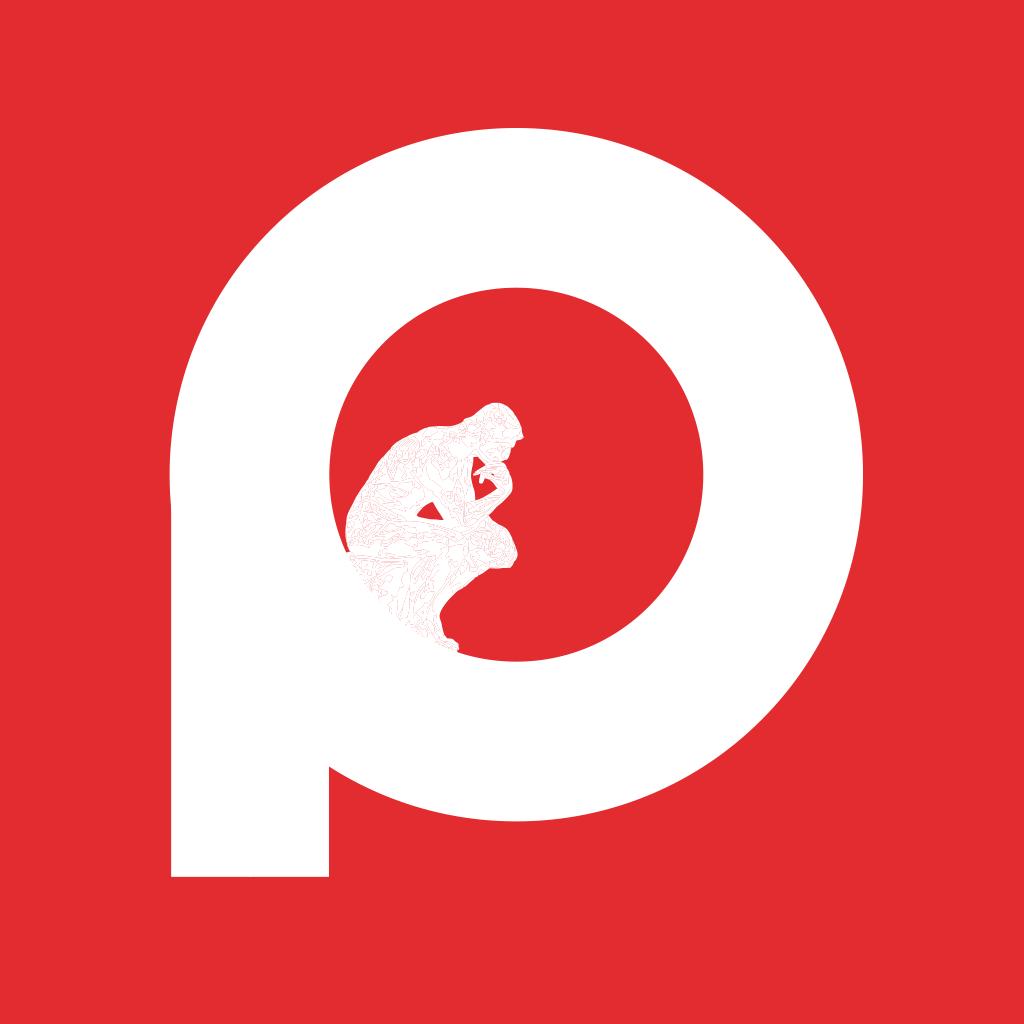
Evrim?s article, ?Gauging Proximities: An Inquiry into a Possible Nexus Between Middle Eastern and Western Painting,? was published in 2014 by the journal Philosophy and Literature In 2008, she published Turkish translations of two dialogues by Plato (?Criton?and ?Lysis?) as part of the volume, Platon Toplu Diyaloglar? I. She has also co translated the memoirs of Turkey?s first professional female journalist, Sabiha Sertel, from Turkish into English; the volume, entitled The Struggle for Modern Turkey: Justice, Activism and a Revolutionary Female Journalist, was published by Bloomsbury in 2019. Evrim is a frequent contributor to international conferences such as the Society for European Philosophy and the Forum for European Philosophy Joint Conference, the European Society for Aesthetics Conference, and the Annual Conference of the Society for Intercultural Philosophy.
In November 2021, Evrim co-authored the academic exposé, ?The Real Academy in Exile,?with David Selim Sayers for the PICT blog, The Faculty Lounge. Sparking a major debate on clique formation in contemporary academia, the article received extensive discussion in international media ranging from the German daily newspaper Frankfurter Allgemeine Zeitung to the state run Turkish news agency Anadolu Ajans? .
MACHA (MARIA) MATALAEV is a founding and core faculty member of PICT Her teaching and research concern comparative literature,translation studies, and classical music

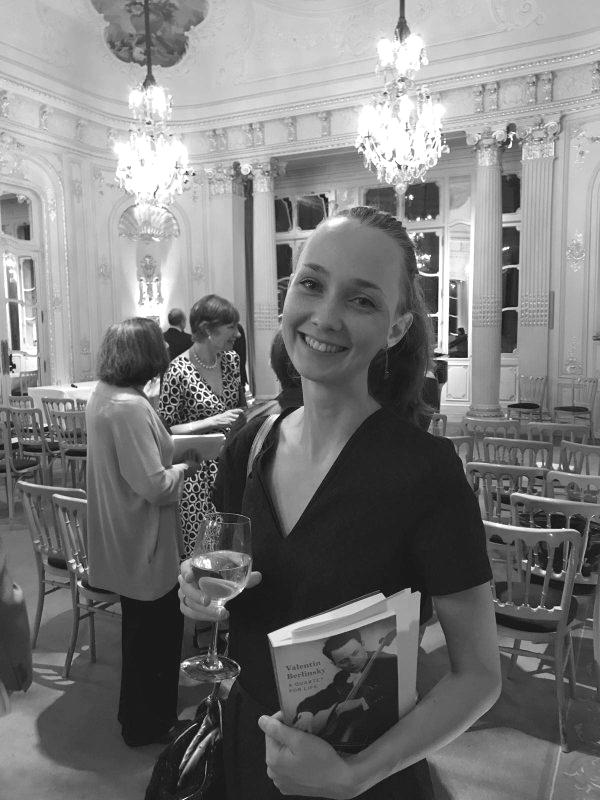
Macha is a professeur certifié who received her MA in Arts, Letters, and Civilization and her BA in Applied Modern Literature, both from the Sorbonne, where she is currently working on a thesis about the rivalry between fiction and reality in the works of Nabokov, Gary, and Cortázar Since 2008, Macha has been active as a freelance translator? her 2015 book Valentin Berlinsky: Le quatuor d?une vie, an edited French translation of Russian cellist Valentin Berlinsky?s memoirs, earned her the ?Prix du Témoignage?at the 2016 Prix des Muses.
Macha is also a concert pianist, having completed her studies at the Regional Conservatory and at the Ecole Normale de Musique A. Cortot in Paris. Laureate of several international awards, she started performing with orchestras at age 15 and has since played as a soloist or chamber musician in various countries, including at the Wigmore Hall (London), the Gaveau and Cortot Halls (Paris), and the Great and Small Halls of the Moscow Conservatory. In recent years, Macha has been active as an audience development manager, working for 3 years with the Secession Orchestra and the piano duet Berlinskaya Ancelle.


DAVID SELIM SAYERS is a founding and core faculty member of PICT. He is a scholar of Ottoman and Turkish Studies with a focus on history and literature.
David is a Lecturer at École Nationale des Ponts et Chaussées (ENPC) and HEC Paris His previous posts include Lecturer at Sorbonne Nouvelle ? Paris 3 (2019-20), University Professor (visiting) at the University of Vienna (2017-18), Research Fellow at Justus Liebig University Giessen (2016-17), and Lecturer at San Francisco State University (2013 16). He received his Ph.D. in Near Eastern Studies from Princeton University, his M A in Turkish Literature from Bilkent University, and his BA in Theology from the University of Cambridge A native speaker of English, German, and Turkish, David has taught university courses in all three languages as well as French.
David?s publications include the books The Wiles of Women as a Literary Genre (Harrassowitz, 2019) and T?fli Hikayeleri (Bilgi University Press, 2013) as well as the translated volumes The Struggle for Modern Turkey (Bloomsbury, 2019) and Muhacirname: Poetry?s Voice for the Karamanlidhes Refugees (Istos, 2016).His scholarly introductions to the work of Sabahattin Ali and Sabiha Sertel have been published by Penguin Classics and Bloomsbury, and his articles have appeared in academic and literary journals alike David has also commented on Turkish current affairs in the media, including the ABC television show Good Morning America.
In November 2021, David co authored the academic exposé, ?The Real Academy in Exile,?with Evrim Emir Sayers for the PICT blog, The Faculty Lounge Sparking a major debate on clique formation in contemporary academia, the article received extensive discussion in international media ranging from the German daily newspaper Frankfurter Allgemeine Zeitung to the state run Turkish news agency Anadolu Ajans? .
 Photo byKelvin Han C@kelvinhan anningRise, Fort CanningParkTreeTunnel, Singapore
Photo byKelvin Han C@kelvinhan anningRise, Fort CanningParkTreeTunnel, Singapore
HECTOR ?YUCA?ULLOQUE is a founding and core faculty member of PICT He is a film director, director of photography, editor, and producer whose teaching is geared towards film professionals,aspiring filmmakers, and film aficionados


Hector is co founder of the film production company, Medio de Contención Producciones, with the historian and anthropologist Manuel Ruiz Montealegre His first documentary, Hartos Evos Aquí Hay (2006), won the Best Documentary Prize at the Biarritz Festival 2006 and the Otras Miradas (Other Looks) Award 2008 from the Latin American Council of Social Sciences. The first feature film produced by Hector and Montealegre, Valley of Souls (Nicolás Rincón Gille, 2019), was awarded the Etoile d?Or for Best Film at the 18th Marrakech International Film Festival and the Special Mention of the Jury at the 42nd Festival des 3 Continents Hector is also a founding member, curator, and programmer of the association Le Chien qui Aboie in Paris, which aims to promote and distribute Colombian and Latin American cinema in France and Europe.
Hector?s activities in the field of film education include organizing and producing the 2017 workshop ?Taller Filmando en Cuba? with German filmmaker Werner Herzog and the 2014 workshop ?Taller Filmando en Colombia?with the late Iranian director Abbas Kiarostami. His 2014 collaborations with Kiarostami also include a master class with the filmmaker at the Jorge Eliecer Gaitán theater and a retrospective of his work at the Cinemateca Distrital and at the Festival Internacional de cine de Cartagena ? FICCI 2014. Since 2012, Hector has been developing Cinescuela, a project combining cinema, audiovisual education, and ICT (Information and Communication Technologies). From the time of its inception, Cinescuela has been implemented in several educational establishments, cultural centres, and over 1200 sites of the National Network of Public Libraries of Colombia

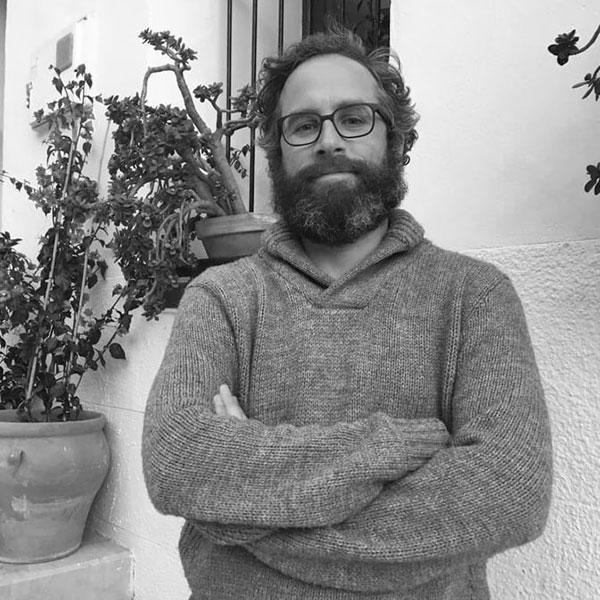
KRISTOF KP VANHOUTTE is a Belgian philosopher with an interest in ?continental philosophy?? particularly the works of Michel Foucault, Jacques Derrida, and Giorgio Agamben? and Church History, with a focus on the Early Church Fathers and Medieval concepts of the Afterlife.


Kristof is Guest Professor of Philosophy at the Pontifical University Antonianum, Rome, Italy, and Research Fellow at the University of the Free State, Bloemfontein, South Africa Having received his BA and MA from the Catholic University of Leuven, Belgium, Kristof went on to study Spiritual Theology at the Pontifical University Gregoriana in Rome before obtaining his PhD in Philosophy from the Pontifical University Antonianum He has served as Postdoctoral Fellow at the Institute of Advanced Studies in the Humanities, University of Edinburgh, UK, and is the recipient of the 2010 Essay Prize for European Philosophy from Kant to the Present, awarded by the University of Kentucky, USA.
Kristof?s thinking and publications span a variety of genres and reflect his interests in ?continental philosophy,?patristics, theology-philosophy-politics interdependencies, educational theory, and soccer. His publications include Sulla ?vera?Filosofia ? Un?Archeologia della Filosofia Cristiana (On ?True?Philosophy ? An Archaeology of Christian Philosophy) (Lateran University Press, 2009) and Saramago?s Philosophical Heritage (Palgrave Macmillan, 2018 ? co edited with Carlo Salzani) A particular research interest? described by Kristof as the ?Archeology of Forgotten Concepts?? has yielded the publications Purgatory. Philosophical Dimensions (Palgrave Macmillan, 2017 ? co edited with Benjamin McCraw) and Limbo Reapplied. On Living in Perennial Crisis and the Immanent Afterlife (Palgrave Macmillan, 2018) Kristof is currently working on a multifaceted research project analyzing the contemporary implications of the ancient understanding of the concept of Heresy


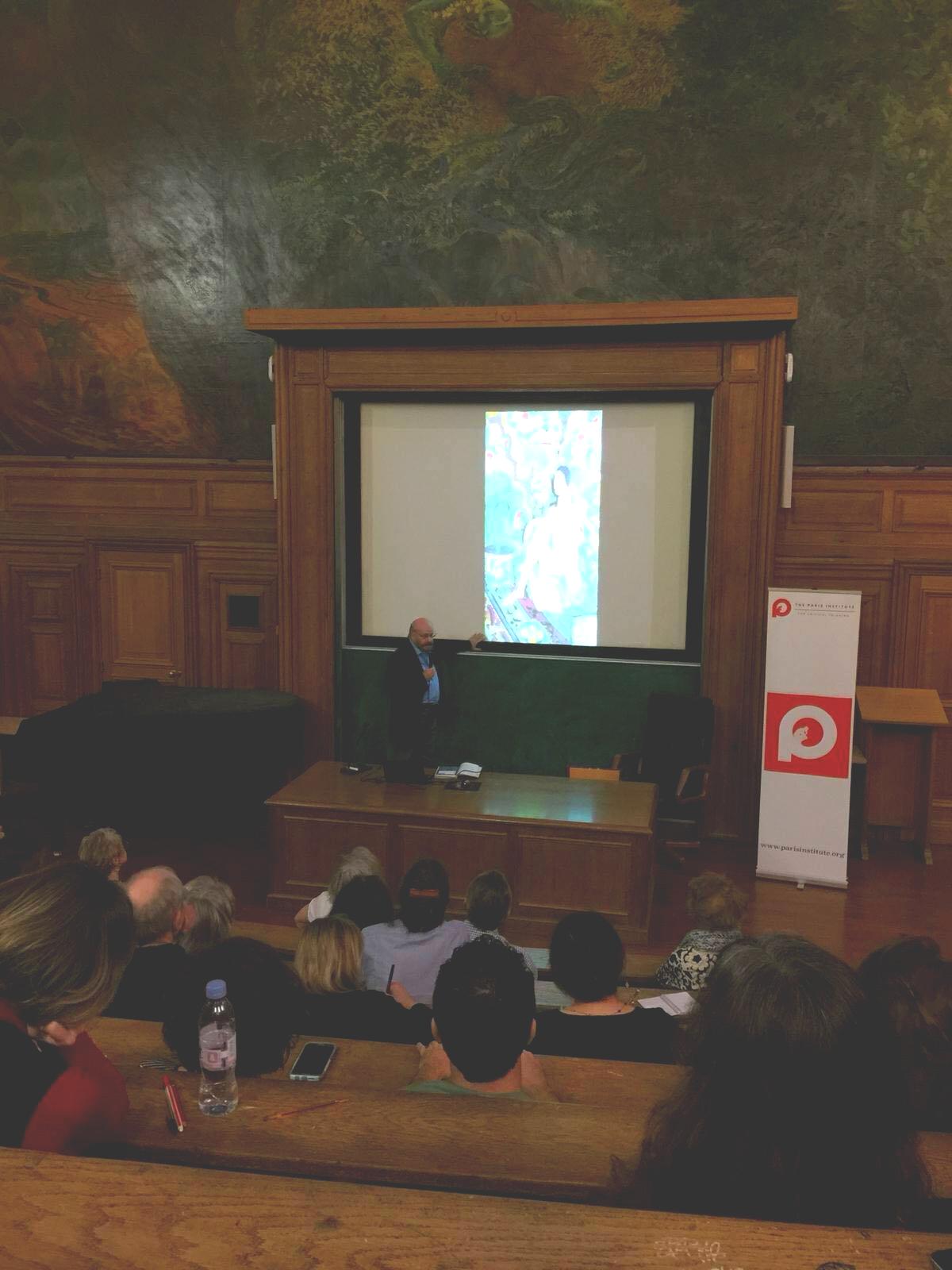 PICT Creative Writing Workshop with Amal Chatterjee, Mairie du Paris Centre,31May 2019
PICT Honorary Lectures I:Michael Barry, ?Matisse and Islamic Art,?Sorbonne University, 8 October 2018
PICT Creative Writing Workshop with Amal Chatterjee, Mairie du Paris Centre,31May 2019
PICT Honorary Lectures I:Michael Barry, ?Matisse and Islamic Art,?Sorbonne University, 8 October 2018


 PICT Aegean Summer School, Ayvalik, Turkey,20 26 June 2022.
PICT Honorary Lectures V:Felix Ó Murchadha,?The Shadow of Kant: Reconsidering the Modern Self,?Goethe Institut Paris, 19 April 2022
PICT Aegean Summer School, Ayvalik, Turkey,20 26 June 2022.
PICT Honorary Lectures V:Felix Ó Murchadha,?The Shadow of Kant: Reconsidering the Modern Self,?Goethe Institut Paris, 19 April 2022

ROLLS-ROYCEREVEALS TRANSFORMATION OF WILDLIFEGARDEN ©Rolls-RoyceMotor Cars

?Today marks the successful conclusion of a project very dear to the hearts of everyone at the Home of Rolls-Royce. The Wildlife Garden, created when the site was first developed almost 20 years ago, has always been one of our most popular initiatives, used extensively by local schoolchildren, as well as our own employees. Now enhanced with a range of new features, it offers even more opportunities to spend time outdoors in nature, with all the physical and mental health benefits that brings."
Andrew Ball, Head of

Corporate Relations, Rolls-Royce Motor Cars. September8,2022 ©Rolls-RoyceMotor Cars
 Rolls-Royce Motor Cars has celebrated the completion of its project to update the Wildlife Garden at the Home of Rolls-Royce at Goodwood in a grand reopening ceremony.
Rolls-Royce Motor Cars has celebrated the completion of its project to update the Wildlife Garden at the Home of Rolls-Royce at Goodwood in a grand reopening ceremony.
 ©Rolls-RoyceMotor Cars
©Rolls-RoyceMotor Cars
Rolls Royce Motor Cars has celebrated the completion of its project to update the Wildlife Garden at the Home of Rolls-Royce at Goodwood in a grand reopening ceremony.
Occupying a small, secluded area just inside the main gates, the Wildlife Garden supports a wide variety of plants, insects, birds and animals native to the South of England

The rejuvenation, carried out in partnership with Chichester District Council and the South Downs National Park Trust, reflects changes in conservation thinking and practice since the Wildlife Garden was established almost 20 years ago, as part of the original landscaping of the 42 acre Goodwood site.
One of the project's central themes is 'rewilding', recognised by conservationists and bodies including the United Nations, as a crucial tool in preserving functional ecosystems and reducing biodiversity loss. Rewilding involves returning land to its former uncultivated state, connecting habitats by creating 'wildlife corridors' and moving towards a more natural ecosystem with reduced human intervention and management
The Wildlife Garden is now one of 60 sites in seven corridors that together form the Strategic Wildlife Corridor. This pioneering rewilding initiative connects the South Downs National Park to Chichester and Pagham Harbours, both of which have numerous conservation designations including Local Nature Reserve (LNR), Special Protection Area (SPA) and Site of Special Scientific Interest (SSSI). Formally approved by Chichester District Council in 2021, this is the first time that wildlife corridors have been strategically included in planning policies anywhere in the UK
As part of the Strategic Wildlife Corridor, the Wildlife Garden will play an important role in protecting biodiversity, particularly honeybees, bumblebees, butterflies and other pollinators, by reconnecting habitat areas previously fragmented by human activity
The updated Garden also incorporates elements of the winning design from the Wildlife Garden Competition held in 2021, in which children aged 5 11 were invited to submit ideas for new features that would benefit both wildlife and people
Iris, then aged eight, created Tiggy Town, to help support the UK?s wild hedgehog population, which is in critical decline Her individual hedgehog houses, each with its own address, have been lovingly made to her design by Apprentices in the Interior Surface Centre The department has also produced beautiful Bespoke nest-boxes for birds, bats, dormice and solitary bees and a new sign at the entrance.
Another of Iris's key design features, 'hedgehog highways' in the fences, are formed from recycled terracotta pipes which have been cut in half to form an archway for the hedgehogs to pass under. The Garden's centrepiece is a new pond, shallow enough for hedgehogs to drink from and bathe in safely, with a boardwalk enabling them to climb out should they become tired
Some welcome additions to the project also included a new seating area created using recycled wooden pallets, a newly rebuilt entrance gate and the creation of a safe bark pathway through the Garden
Andrew Ball said, "This project is so full of positives, involving children's imagination and creativity, collaboration between Rolls Royce and our local community, real generosity of spirit and a great sense of shared enterprise and teamwork all in the name of supporting our fantastic local wildlife. We're particularly excited to be part of wider rewilding and wildlife corridor creation projects that support biodiversity far beyond our own boundaries. This update will ensure the Wildlife Garden remains a truly valuable resource for people and nature alike for many years to come "
Story of Gardening Museum
by
Stonewood Design
The Newt in Somerset, A359, Hadspen, Bruton BA7 7NG,United Kingdom
Hidden from view on the edge of a small woodland, the Story of Gardening Museum is a space of calm serenity that celebrates the historic Somerset landscape that surrounds it.
From a distance, the only hint of a built structure is a balustrade that runs along the edge of the museum?s grassed roof, where deer and other wildlife roam freely.
From here, a treetop walkway gently snakes down into the woodland, fully immersing the visitor in nature The visitor catches the first glimpses of the museum?s glazed façade between the trees and foliage. It is an unexpected and almost incongruous sight to find such an elegant civic space hidden away in this remote bucolic setting.On arrival, elegant five-metre-high glass doors slide open to welcome the visitor into the reception and café space The museum?s permanent exhibition centres on the history of gardening. The exhibition spaces offer broad views back out to the woodland, maintaining a constant dialogue between interior and exterior.The objects on display require no humidity or temperature control.The earth is used to insulate and heat the building through a ground-source heat pump, while excess heat from the server room is directed back into the earth; the exhibition spaces are heated and ventilated by an air source heat pump. The Story of Gardening museum won a RIBA National Award and a RIBA South West Sustainability Award in 2021 The Newt in Somerset was named RIBA South West Client of the Year 2021.
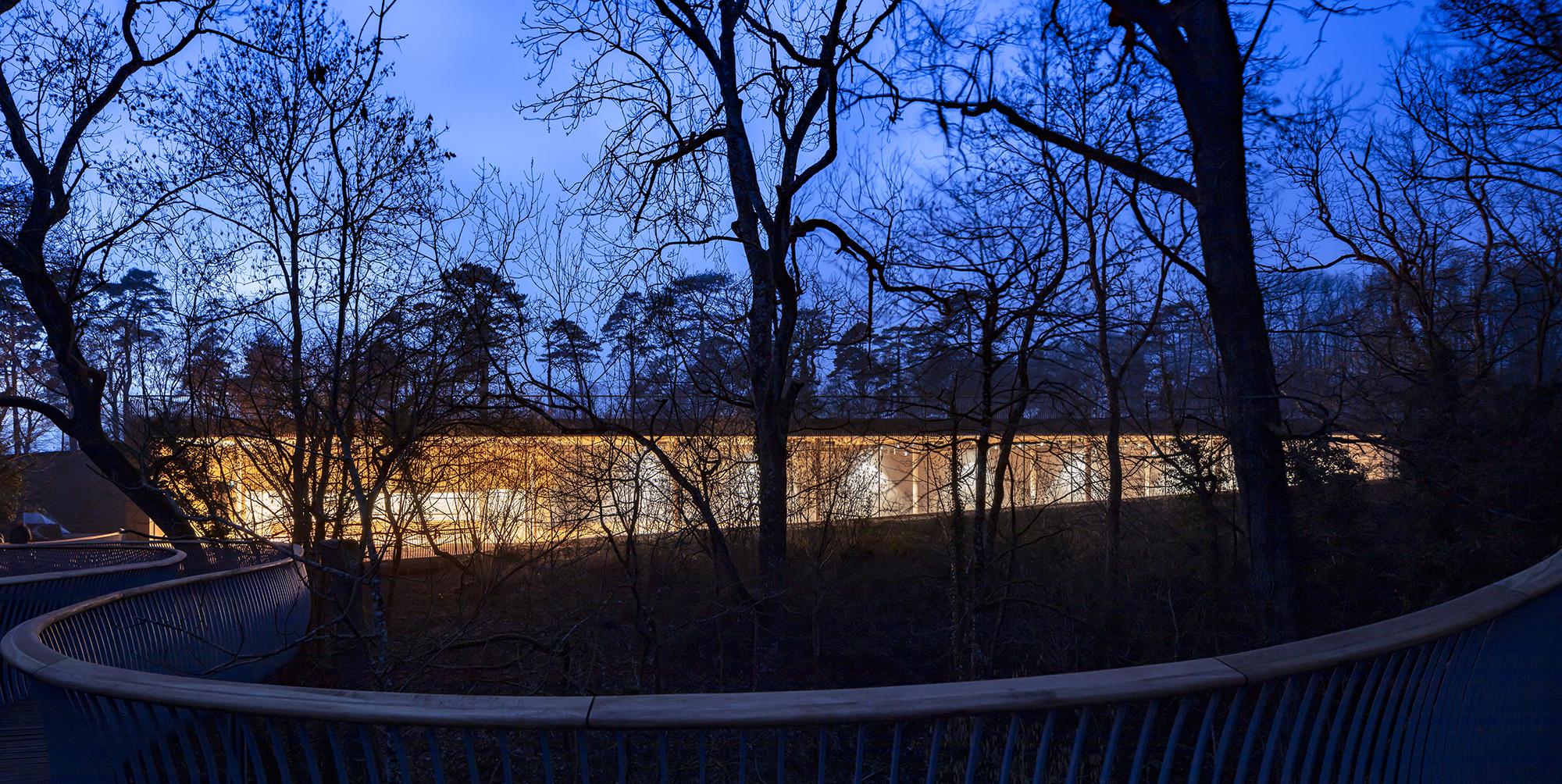
 © CraigAuckland
© CraigAuckland
The Story of Gardening museum is located on the edge of a small woodland area within the wider visitor attraction at The Newt in Somerset. The museum is set underground with a long glazed elevation opening onto the adjacent woodland The roof is grassed and is inhabited by the estate deer herd. The museum has as low a visual impact as possible as one approaches it.The approach is dramatic.The woodland floor descends from the museum forming a dell at a lower level. This topography provides the setting for a treetop walkway The walkway, called ?The Viper? , starts its journey at the museum roof level and winds its way through the trees..

 © CraigAuckland
© CraigAuckland
The visitor approaches it at the northern end of the museum and walks through the tree canopies towards the entrance As one weaves through the trees, immersed in the flora and fauna of the woodland, views of the museum are glimpsed at canopy level. The drama of arrival at the The Story of Gardening is set up by the juxtaposition of a civic public space which is located in a secluded woodland setting On arrival at the entrance the walkway splays out to form a terrace and the museum reveals itself. Full height glazing to the front elevation is minimal and elegant.
 © CraigAuckland
© CraigAuckland
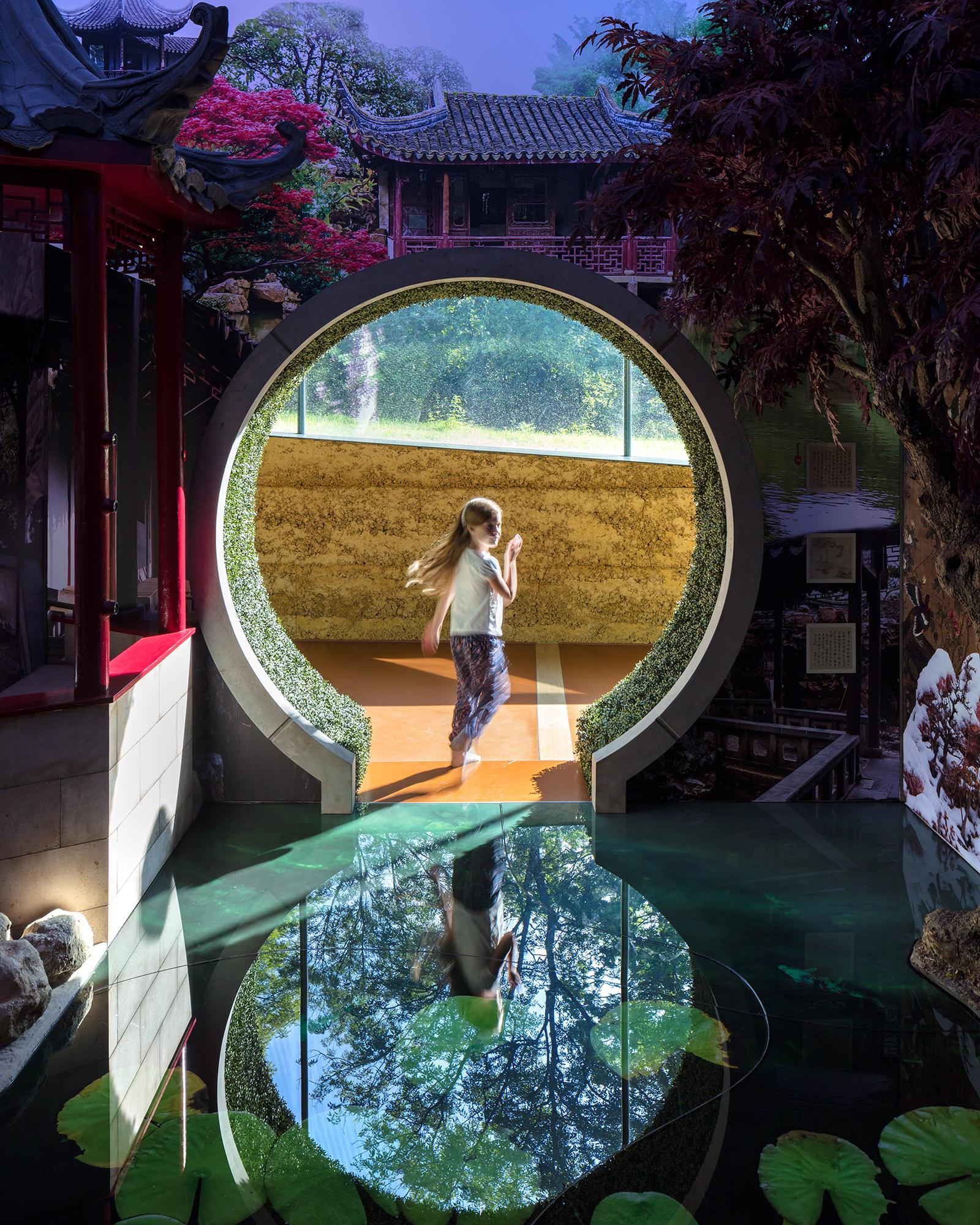 © CraigAuckland
© CraigAuckland
During the day-time the woodland is reflected in the glazing.5m high glazed sliding doors open to present the visitor reception and cafe The permanent exhibition offers the opportunity to engage in a deeper exploration of the central theme of the estate, the garden.All the while, whilst enjoying the exhibition and the museum, the visitor can look back outside through the glazed elevation to the woodland right outside The interior of the museum is a simple in situ concrete shell

Bathrooms and cafe areas display a continental style ?civic ness?through the use of moulded ceramic tiles. This is complemented by a playfulness in metal coat pegs which are handcrafted by locals blacksmiths in a natural waxed finish to the theme of garden tools, flowers and insects. The southern wall of the museum, and the base to the glazed elevation are expressed inside and outside by the use of local Hadspen stone aggregate concrete. This material is being used elsewhere on the Estate and grounds the museum in its context The contents of the museum can exist in a robust environment.
The internal environment of the museum is therefore more about sufficient fresh air and correct temperature for visitors than a perfectly controlled atmosphere more akin to other museums and galleries This allows the cafe space to be an ?in between?environment where staff and visitors may decide to keep their coats on. The museum utilises thermal mass from the in-situ concrete which lessons the cooling and heating load. A ground source heat pump with a horizontal ground array primarily feeds underfloor heating A mechanical vent heat recovering system minimises the energy required to heat and cool air.
Curated by Paula Pintos
MUSEUM :HADSPEN, UNITED KINGDOM
Architects:Stonewood Design
Area :1000 m²
Year : 2019
Photographs :Craig Auckland
Manufacturers : Edgewood Joinery, IQ Glass, IQ Glass Roltrac mechanisms, MJ Patch, Sphere 8, Woodmace using Hadspen Quarry Stone
Services Engineers :E3
Contractor :Beard Construction
Planning Consultant :AZ Urban Studio
Stonewood Design received a RIBA National Award,for their project Myrtle Cottage Garden Studio in 2015 This award celebrates architecture of the very highest level The project demonstrates a sensitive approach to a beautiful landscape setting
They were named BD Small Project Architect of the Year 2016.

In 2019 they received a RIBA National Award for Kingswood Preparatory School and Nursery as well as a RIBA South West Project Architect of the Year Award.
In 2021they won a RIBA National Award and a RIBA South West Sustainability Award for the Story of Gardening museum.The same project is currently among the World Architecture News Awards shortlisted entries for Civic Libraries and Museums of 2022.
https:// www.stonewooddesign.co.uk/
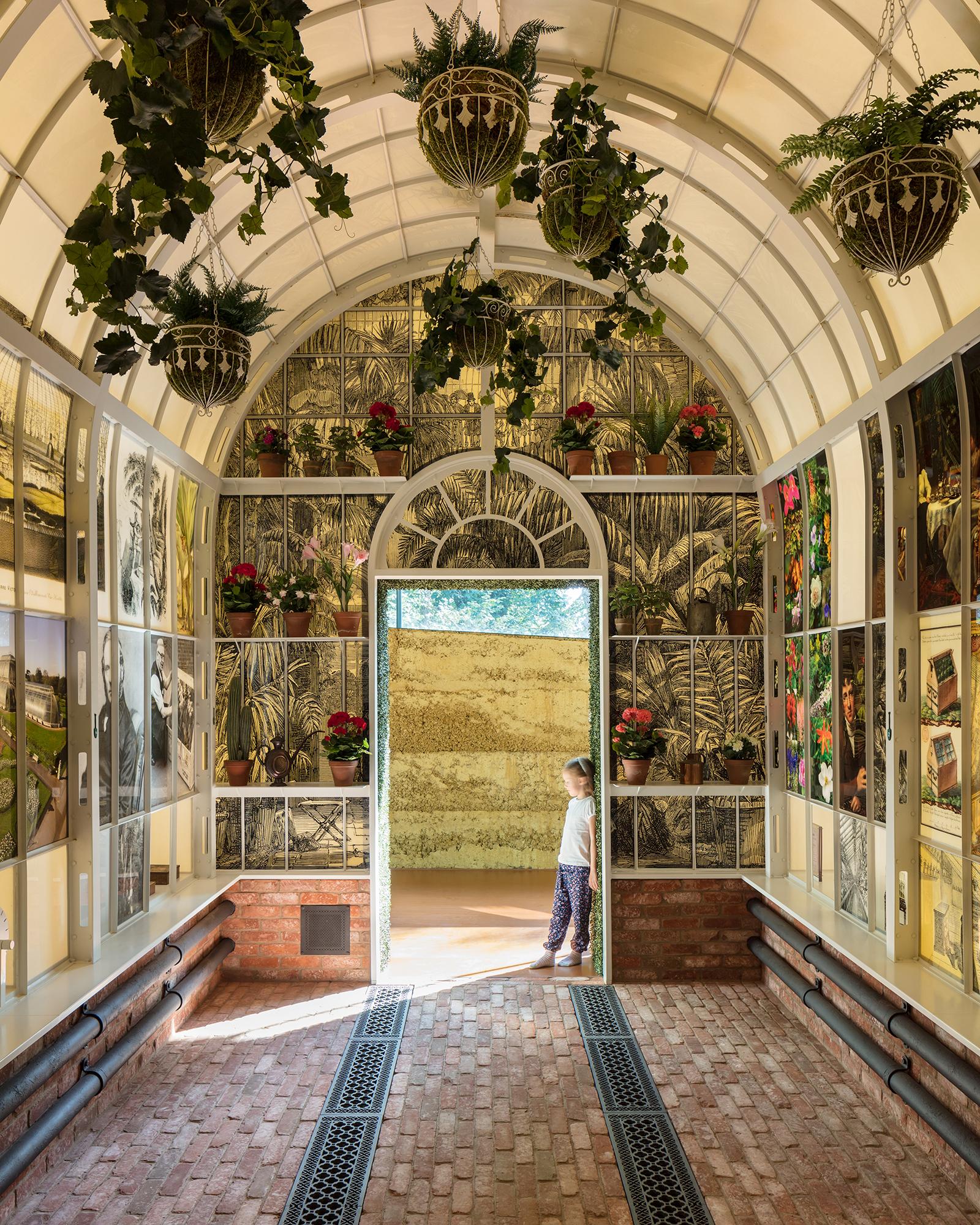 Photo byStonewood Design Co UK
Photo byStonewood Design Co UK

 © CraigAuckland
© CraigAuckland
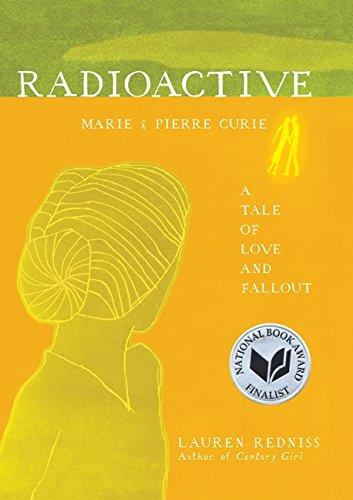
PremierR ecommendstheClassics
When it comes to critical thinking there's only one female that will always come into our minds.
Marie Curie
Paved the way for x-rays and cancer treatment;her sense that pitchblende must include unknown radioactive elements led to the discovery of polonium and radium.
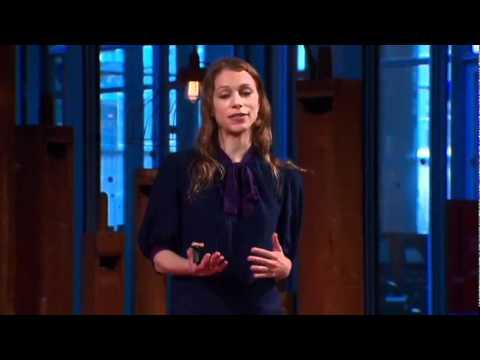
If you take one critical thinking tip from Marie Curie, make it?
Critical thinking is nothing to do with negativity or nitpicking. It?s about asking questions? the right questions. It?s about not accepting things on trust.
Radioactive: Marie and Pierre Curie, ATale of Love and Fallout by Lauren Redniss
He emigrated to the United Statesin 1972 to teach at Florida State University Since coming to Peabodyand in 1985 creating the Opera Étude program that creates new works through collaborative workshops with young composers and singers, he says the greatest things that he's learned over the past 40 years have emerged through the challenges of teaching his art It's an impressive career for a man who describes himself as a "perpetual amateur."- JHU
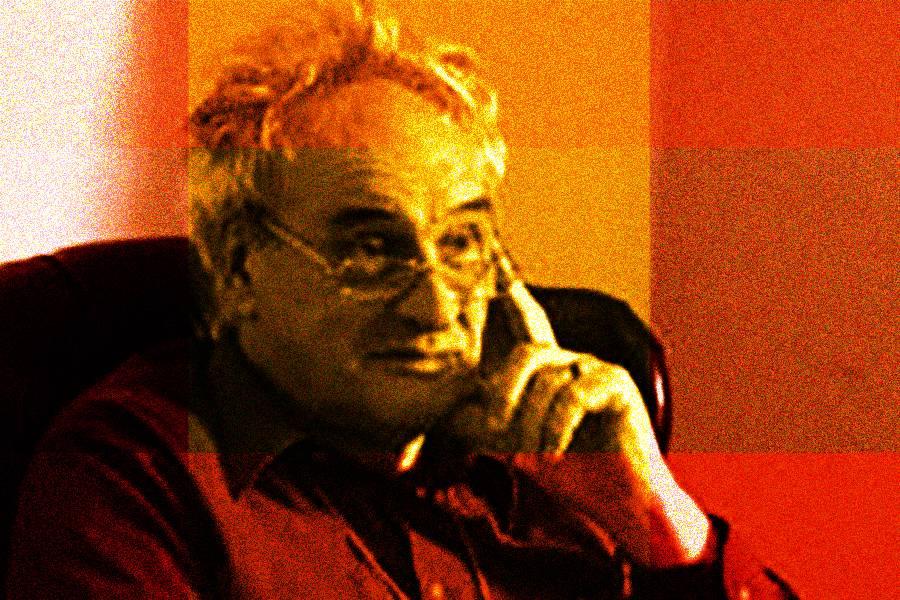
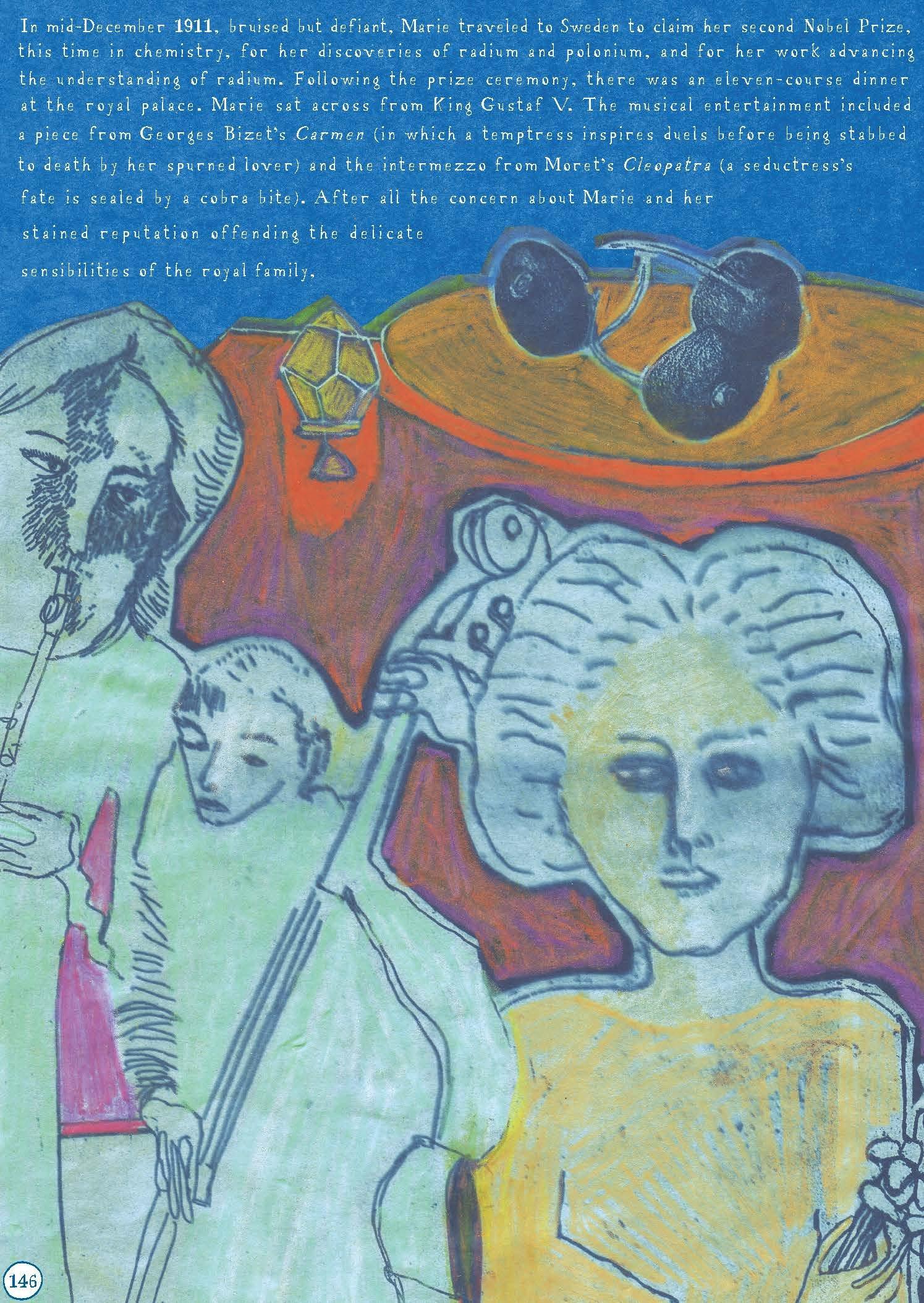 Roger Brunyate, artistic director emeritusof the Opera Department at JohnsHopkins'PeabodyInstitute, where he's been on faculty since 1980, He has an unconventional path to becoming an esteemed opera director, librettist, and teacher. Born in Northern Ireland and educated in England, Brunyate studied classics and science before earning degreesin English and fine artsfrom Cambridge University,all while pursuing music on hisown,and finallydevoting himself to opera full time in the 1960s.
Photo byhub.jhu.edu
Roger Brunyate, artistic director emeritusof the Opera Department at JohnsHopkins'PeabodyInstitute, where he's been on faculty since 1980, He has an unconventional path to becoming an esteemed opera director, librettist, and teacher. Born in Northern Ireland and educated in England, Brunyate studied classics and science before earning degreesin English and fine artsfrom Cambridge University,all while pursuing music on hisown,and finallydevoting himself to opera full time in the 1960s.
Photo byhub.jhu.edu
Way Outside the Box
AReview on Lauren Redniss' RADIOACTIVE
 by Roger Brunyate
by Roger Brunyate
So I order this to read for our book club, thinking it would be just a normal account of the Curies' discovery of radioactivity. The book arrives. Surely there must be some mistake; this looks like something for children? pages filled with big colored illustrations mingled with occasional paragraphs of handwritten text. But no, while often childlike, the book is never childish And the mixture of media gives only a hint of how widely author artist Lauren Redniss has foraged to fill her cornucopia of art, science, and history
She starts by apologizing to Marie Curie for ignoring her insistence that "there is no connection between my scientific work and the facts of private life " Not only does she make such a connection, she glories in it Look at the chapter headings of the first part: Symmetry, Magnetism, Fusion? scientific terms, but also personal ones. In the opening chapter, Redniss portrays the separate lives of Pierre and Marie in symmetry, on opposite pages, before showing the magnetism that drew them together as a couple, and the fusion that produced a child But she also tells us of Pierre's work on the symmetry of crystals, and Marie's on magnetism and radiation. The question of atomic fusion (and fission) lies far in the future.
But Redniss goes there too At the very end of the first part, amid drawings of Marie and Pierre embracing in their laboratory, she has the words: "The new science needed a name " Turn the page to a double spread glowing in a muted cloudburst, containing only the words, "I coined the term radioactivity." Then look again, and you realize that the cloudburst is really an atomic blast? not at all in your face, but lurking there as a threat
Although the longer second part continues with the story of the Curies, it strikes off sparks in many other directions: spiritualism, for example, the dancer Loïe Fuller, a list of famous Poles. A photograph of a man receiving radium treatment for a tumor in 1920 is juxtaposed with the first hand account of a tumor survivor in 2001 Soon, we are jumping to Chernobyl, the Manhattan Project, and Three-Mile Island, and each time Redniss finds some unexpected witness to bring her message home. An FBI surveillance report; photos of the mutant zinnias and roses found near Harrisburg; the reports of a biologist studying wildlife in the Ukraine. One of the most effective spreads in the book is also the simplest, a black paper cutout used by a survivor of Hiroshima to show how her father's blackened skin peeled away at a touch "A tale of love and fallout," says the subtitle. Nothing is predictable, neither the great discoveries nor their unexpected consequences, and love is the least logical thing of all So by jumping around in subject and time, Redniss is only celebrating the power of surprise She is thinking outside the box, way outside. The skill with which she balances the glory of the Curies' discoveries and their continued benefits against their terrible consequences would be remarkable even in a book that was all text. But the illustrations offer a further layer of unpredictability In almost no case does she simply illustrate the action; her drawings are bold, somewhat expressionist, even disturbing. I can't say that I like them as art, but as a constantly shifting matrix for a subject that refuses to be pinned down, their effect is powerful indeed.
My only real complaint is that patches on the hard cover are printed in slightly raised ink like fine sandpaper, that you fear coming off on your hands. But close the cover and put out the lights, and you will see their purpose: the book literally glows in the dark!

Critically acclaimed for her role as Marie Curie, she recently had netizens attention on her as she shared her monologue on Instagram during the Queen's funeral. And just like the roles she played , her admiration for the Queen left her awestruck , repeating the words dignified and grace to describe what her family witnessed at the time.
Rosamund Pike and the characters she brought to life.
? I took my children out to of school to watch the funeral, livestreamed by the BBC. The coverage, as I?m sure you?ll all agree, was exemplary and an example of what British broadcasterscando best." https:// www.instagram.com/ p/ CisVp80KZaM/
 Photo byempireonline.com
Photo byempireonline.com
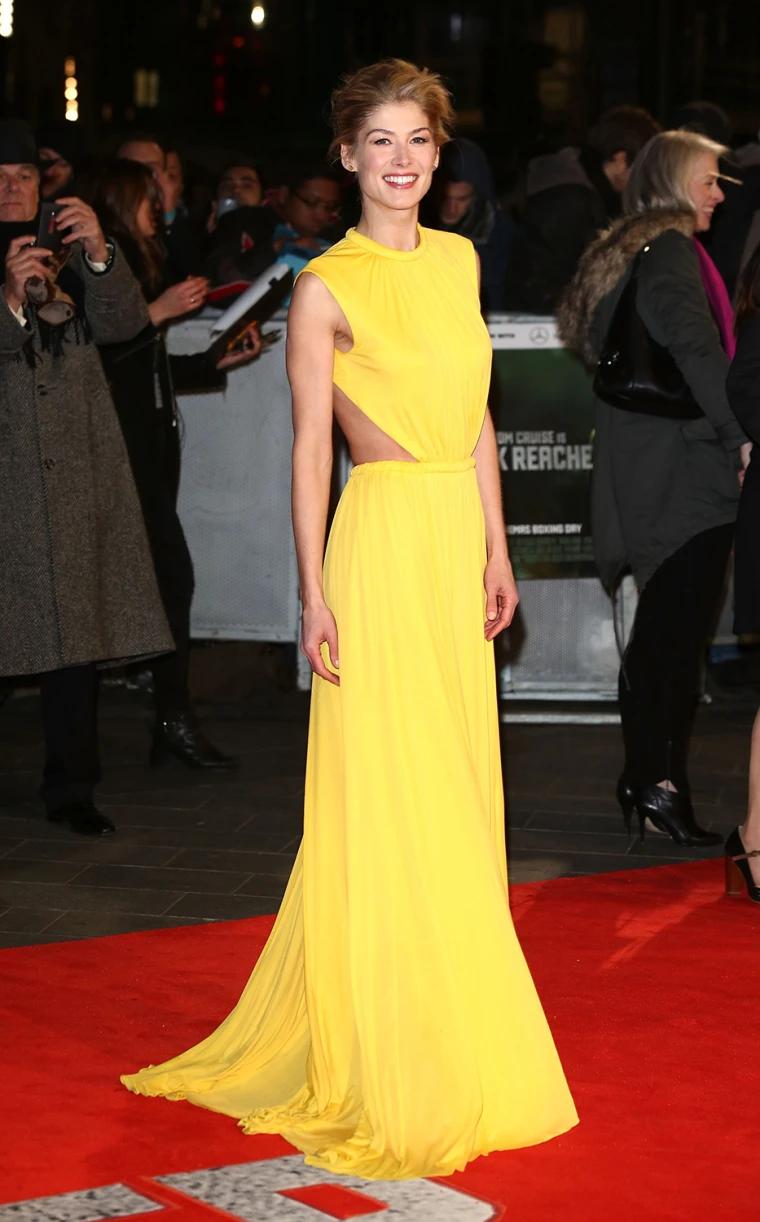
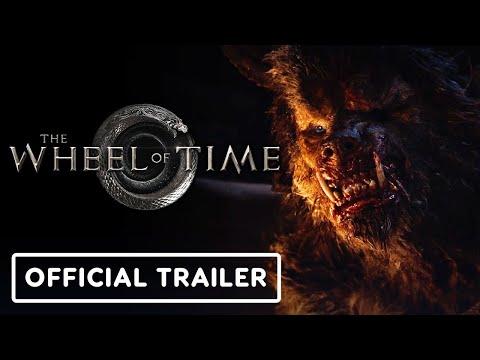





 Photo byAlexander Mcqueen
Photo byAlexander Mcqueen
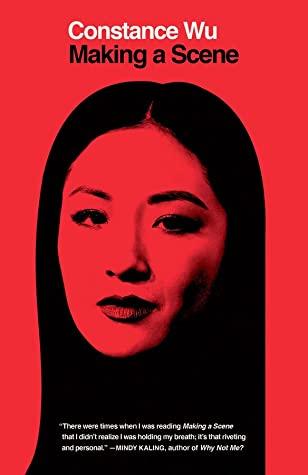
Making a Scene by Constance Wu
Named a Most Anticipated Book by Time and The Associated Press!
From actor Constance Wu, a powerful and poignant memoir in essays
Growing up in the friendly suburbs of Richmond,Virginia, Constance Wu was often scolded for having big feelings or strong reactions ?Good girls don? t make scenes,?people warned her.And while she spent most of her childhood suppressing her bold, emotional nature,she found an early outlet in local community theater? it was the one place where big feelings were okay? were good, even Acting became her refuge, her touchstone, and eventually her vocation.At eighteen she moved to New York, where she?d spend the next ten years of her life auditioning, waiting tables, and struggling to make rent before her two big breaks:the TV sitcom Fresh Off the Boat and the hit film Crazy Rich Asians.
Through raw and relatable essays, Constance shares private memories of childhood, young love and heartbreak, sexual assault and harassment, and how she ?made it?in Hollywood. Her stories offer a behind the scenes look at being Asian American in the entertainment industry and the continuing evolution of her identity and influence in the public eye Making a Scene is an intimate portrait of pressures and pleasures of existing in today?s world.
BioXp? 9600 system ? a fully automated, high-throughput benchtop instrument for synthetic biology workflows ? empowers scientists to accelerate discovery of new vaccines and biologics.
SAN DIEGO, Sept.19,2022 (GLOBE NEWSWIRE)-- Codex DNA,Inc.(NASDAQ:DNAY), a pioneer in automated benchtop synthetic biology systems, today announced commercial release and first shipment of the BioXp? 9600 system, a next generation high throughput platform designed to revolutionize synthetic biology workflows The latest instrument further accelerates the design build test process of research and discovery by building biology overnight and at the push of a button.
The fully automated BioXp? system enables scientists to overcome process limitations created by the turnaround time, cost,or complexity of alternative means of building or acquiring DNA and mRNA.The BioXp? system provides over night, automated synthesis of genes, clones, DNA libraries, and mRNA, enabling users to more tightly integrate design and build cycles, driving greater productivity and reducing time to answer.
?Codex DNA is committed to empowering and inspiring scientists to advance their discovery of life changing vaccines and biologics We believe the BioXp? 9600 system, the third release on our versatile and powerful BioXp platform,can enable scientists to overcome inefficiencies in their workflows which limit their discovery.Demonstrating our commitment, we accelerated development of this system, releasing one quarter ahead of schedule,?said Todd R.Nelson, PhD, CEO of Codex DNA.
 Photo by JINZHOU LIN
Photo by JINZHOU LIN
Codex DNA Debuts
Next-Generation Automated Synthetic Biology Workstation


?The versatility of the platform enables us to release additional capabilities intended to optimize discovery workflows.Beginning in Q1of 2023 we will release additional BioXp kits that enable scientists to begin the cloning, amplification,and mRNA synthesis process from the customers own linear DNA or plasmid DNA We believe providing scientists the flexibility to begin with their sequence, linear DNA, or plasmid DNA, will further expand the utility, speed, and impact of the system,?said Todd R.Nelson, PhD, CEO of Codex DNA.
About Codex DNA
Codex DNA is empowering scientists with the ability to create novel,synthetic biology-enabled solutions for many of humanity?s greatest challenges.As inventors of the industry standard Gibson Assembly® method and the first commercial automated benchtop DNA and mRNA synthesis system, Codex DNA is enabling rapid,accurate, and reproducible writing of DNA and mRNA for numerous downstream markets. The award winning BioXp? system consolidates, automates, and optimizes the entire synthesis, cloning, and amplification workflow As a result, it delivers virtually error free synthesis of DNA and RNA at scale within days and hours instead of weeks or months Scientists around the world are using the technology in their own laboratories to accelerate the design-build-test paradigm for novel, high-value products for precision medicine,biologics drug discovery, vaccine and therapeutic development, genome editing, and cell and gene therapy Codex DNA is a public company based in San Diego For more information, visit codexdna.com.
The Paradigm Shift of the Digital Age
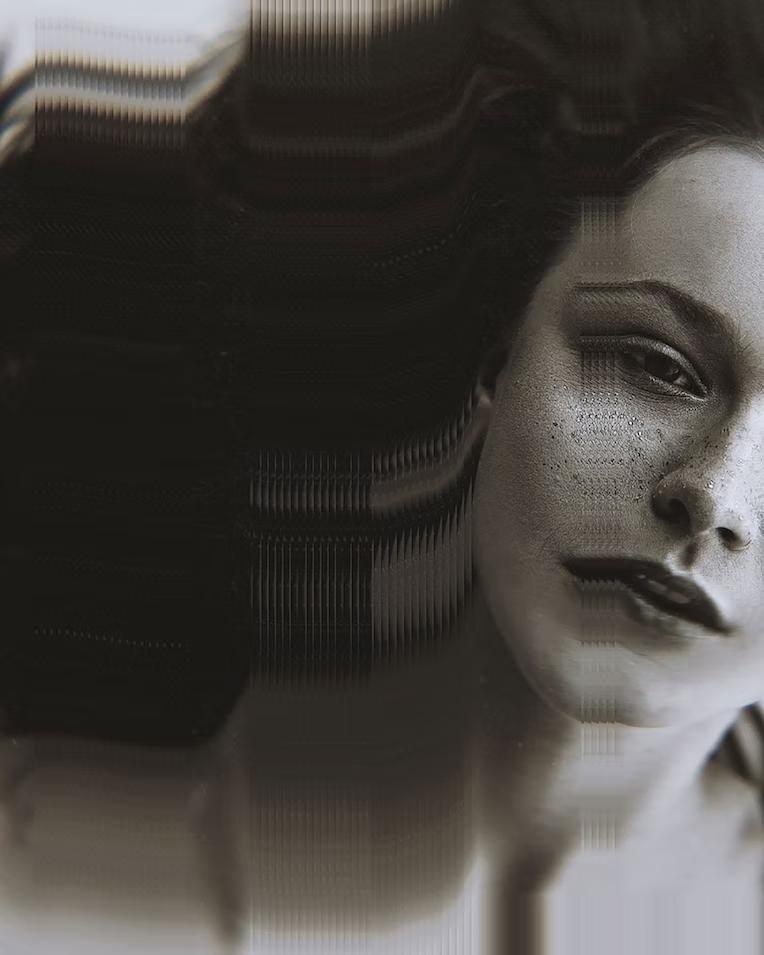 Written by Marília Matoso | Translated by Diogo Simões
Written by Marília Matoso | Translated by Diogo Simões
Five Years from Now, Will You be Working in a Profession That Does Not Exist?
Imagine explaining to someone 25 years ago what the professions of social media manager, uber driver, or drone operator are all about in 2020. Technology combined with population demands, resource scarcity, urbanization, and other factors have created several new jobs and radically changed others. Research claims that 65% of children entering elementary school today will end up working in positions that don't yet exist.
IA 2016 World Economic Forum report found that in many industries and countries, the most sought after occupations or specialties did not exist ten or even five years ago, and the pace of change is set to accelerate In the old days, when you entered college and trained in a functional area for an available job, where you would spend most of your career The paradigm shift of the digital age is far from practical knowledge about the ability to be fluid in your skill set and understanding. What will become of these professions when we talk about Architecture, Engineering, and Design?
Where Are We Going?
Architecture is one of the world's oldest professions. Although the formal degree of architecture did not appear until the end of the 19th century in England, by the time our ancestors piled the first stones to build a shelter in the Neolithic period, this was already an active form of construction If we are to speak more formally, the architectural profession is very recent, less than 200 years old, and became famous when the first offices emerged.Groups of people who did not belong to the bourgeoisie could hire architectural and design services
Architects have always existed, building palaces, temples, and churches These people were not always architects but artists, engineers, or artisans At the beginning of the 20th century, discussions about the formation of cities, major engineering works, and opening a university such as the Bauhaus (all driven by the Industrial Revolution) brought the architectural profession to another level Since then, the world has changed a lot The Digital Revolution and the Fourth Industrial Revolution have given new meaning to the careers of architect, engineer, and designer (which emerged less than 100 years ago) in society with new paradigms
Should we stick to the classical training of the architect who builds houses with bricks, matches the wall color to the cladding, and scales the size of windows?Will the engineer always be the one who calculates concrete and iron beams? And will the designer always be the one who creates graphic images or cool chairs? Aren't there other urgent and fundamental niches beyond classical academic training that need to be taken up?
 Photo by Karina Tess
Photo by Karina Tess
Skills, Not Degrees
The future of work will not be about degrees.More and more, it will be about skills.And no school, whether Harvard or Oxford, can insulate us from the unpredictability of technological progression and disruption.Although our parents probably held a job all their lives, most of us have had multiple jobs and careers.However,shifting our focus from degrees to skills will enable a larger workforce representing our population's diversity, closing employment gaps This shift will mean transitioning to an always on, skills-based education infrastructure that encompasses credentials and certification and the ability for work and employment

We need to understand that we can use spatial skills more abstractly to develop tomorrow's systems, working with other types of technicians and skills.We need to learn to recognize our abilities and place them in the world through the junction of different universes And wouldn't these universes be new market niches emerging with the various changes the world has been going through in the last 30 years?Having multiple skills will be essential to the future of work.We all have numerous talents, and no one is good at just one thing,but in the traditional system of education and work, we were taught to focus on a single target.We will need to be polymaths, that is, to move between different areas of knowledge,not being limited to a single subject
Niches of the Future

When I started Tabulla a year ago, I immersed myself intensely in articles,research, and books about the future of architecture, engineering,and design, new models of creation, profession,new modalities and niches of work, and the influences of technology on university careers Almost a year of many posts later, towards the end of last year, I noticed a pattern:some niches seemed to be standing out and gaining traction,transforming the traditional way of what we were taught in college
I started to gatherall the articlesand research.I identified 20 nichesthat were repeated ininnovative businesscases,instudiesinthe best universitiesinthe world,and articlesinthe most powerful technology and creativitymagazines.These 20 nichesgave rise to Nichosdo Futuro (Nichesof the Future),mynew ebook,whichexploreswhycreative work will change,whythese areashave everything to succeed and why maybe you are an architect ordesignerwho doesnot work directlyon design:simplybecause the future isnot just that.The end isvast,broad, giant,and full of opportunitiesand professions.These are the 20 areas that I coverinNichosdo Futuro:
Photo by images
com
- Justice Designer - Virtual Retail Designer Food Architect - FictionArchitect - Self-Building and Social Architecture Manager - Experience Designer - Nature Designer - HealthDesignerand Healing Architect - NeuroArchitect orActionDesigner - DesignerforSeniorsorMultigenerational Architects - Communicatorof Spaces - DesignforChildren WaterArchitect - Drone Space Adapter - Educatorsof Creation Past Searcher - Precast Specialist - UrbanTech Designers - Smart HomesManager - TechArtists
adsttc
eonar

L
ardodaV inci,alessoninperfumery
The story behind the ?nameless?perfume, inspired by Leonardo De Vinci

One learns that the painter was dedicated to perfume thanks to Mara Pulli?s recent discoveries, a specialist of Leonardo da Vinci. More precisely, he tried to capture the essence of the plants. That is how she found out, in his notes from the Codice Atlantico, descriptions of the various methods of extraction, such as the maceration, and the « enfleurage, that he called ?modern technic?For him, perfume acted as a treatment just as well as a seduction device. One can cite the Jasminum Officinalis, the Lavandula spica, and the citrus Aurantium among his favorite essential oils He already, at the time, was using even ligustrum vulgare These ingredients are still used today, as one can see More, he became a garden designer of odors. That is why he designed a garden, a roof consisting of cedars and lemon trees. A green perfume would release mingled with the song of the birds,creating a synesthetic atmosphere
The ?nameless? perfume, Emilie Copermann?s creation
Consequently, this « nameless » perfume had to express the eclectic and stunning Leonardo de Vinci?s spirit. He has been able to be enigmatic, highly spiritual, and even a visionary. It?s about this duality that Emilie considered attractive to put forward What could have been better than the tree to illustrate this statement? For her, the tree symbolizes a natural element deeply rooted in the earth, with its branches orientated towards the Divine.
The choice of the oak appeared to be a piece of evidence. It is a grand, noble tree with the emblem of longevity. ?That is why my creation turns around this central idea while evoking an olfactory illusion, regarding the multiple interpretations, in the manner of Leonardo?s work,?declares Emilie Eventually, notes of pink berries of seeds of angelic are there to show Leonard?s fantasy The soul of the perfume is impregnated with patchouli for its deepness, of incense for the spiritual touch. Finally, the ambrostar, a Symrise captive,brings vibration and a masculine effect
The « nameless » perfume flacon designed by Franz Degano
?The challenge was about capturing the multifaceted essence of Leonardo de Vinci?s work. Furthermore, the project had to enclose the esthetic of the Renaissance.To design this flacon, I smelt the perfume for a long time, and I spent many hours of study with Maria Pirulli, the searcher and commissionary of the exhibition,?told me, Franz Delano from Quinto Lancio agency
The bottle's stopper had to hold a rebus to bring an authentic and modern message from Leonardo de Vinci. Maria Pirulli reports, "it is most probable that these recurs were usually used at the Milanese Court. Furthermore, some riddles were placed into ornamental clothesto passon private messagesfor recreational purposes. Consequently, Leonardo de Vinci's enigmas reflect on the fundamental themes of the period. In effect, it is a key concept that Leonardo mentions in various texts while declaring that the thought canbe painted" .
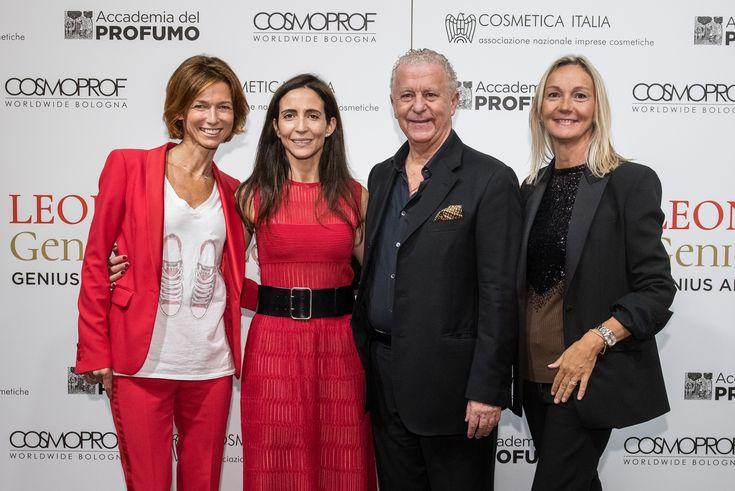
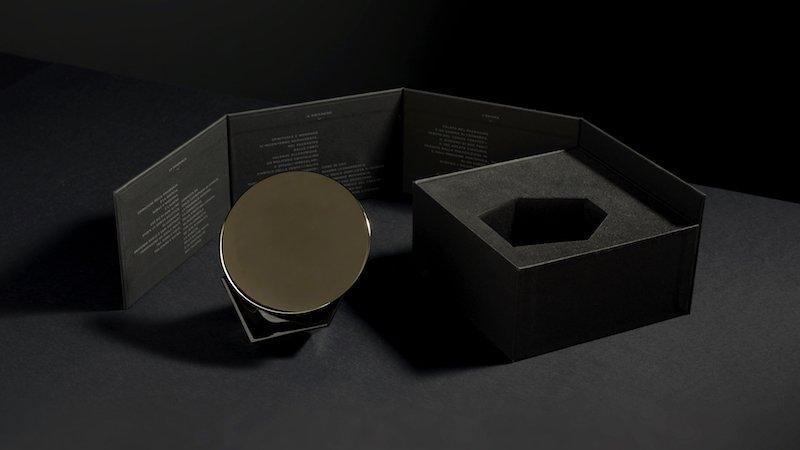
Forexample,when an enigma containsa heart,letters ?ni,?and two bridges with three arches, ?the solution is revealed, by reading from right to left,?as the Master wrote, to be ?ponticore.?So, then, it takes a double meaning. Associated with the perfume, the enigma takes the place of the fragrance, whichreachesthe heart and incarnatesthe essence of the creation.
It isa lessoninperfumery!

 The design and making of of the flaconbyFranz Degano Source and photos:Tatousenti
The design and making of of the flaconbyFranz Degano Source and photos:Tatousenti
GUTHRIEJENSEN'SRESEARCH ON DIGITAL AGE and the 4thINDUSTRIAL REVOLUTION maythe fourthbe withus We are now living on the World Wide Web, and as disruptive as it may seem, we have no choice but to adapt.But the question is, have we adjusted well to the rise of technology?Are we skilled enough to face the challenges?Here's what we found out. Built upon the innovation of the third industrial revolution, new fields and markets emerged,such as artificial intelligence,the internet of things, self driving vehicles, nanotechnology, renewable energy, quantum computing,and biotechnology.With these, we need new or additional skills to survive in the workplace. 1.Complex Problem Solving - the skill to see relationships between industries and craft creative solutions to problems yet to appear. 2.Critical Thinking - ability to see data into insightful interpretations. 3.Creativity random ability to build something out of ideas 4.People Management =People Skills for leaders/ managers 5.Coordinating with Others - effective communication & collaboration 6.Emotional Intelligence - the natural ability for empathy & curiosity 7.Judgment and Decision-Making - ability to condense a vast amount of data through data analytics 8.Service Orientation - adding value to clients in the form of services 9.Negotiation - the ability to come up with mutually beneficial solutions 10.Cognitive Flexibility - ability to switch between roles as needed
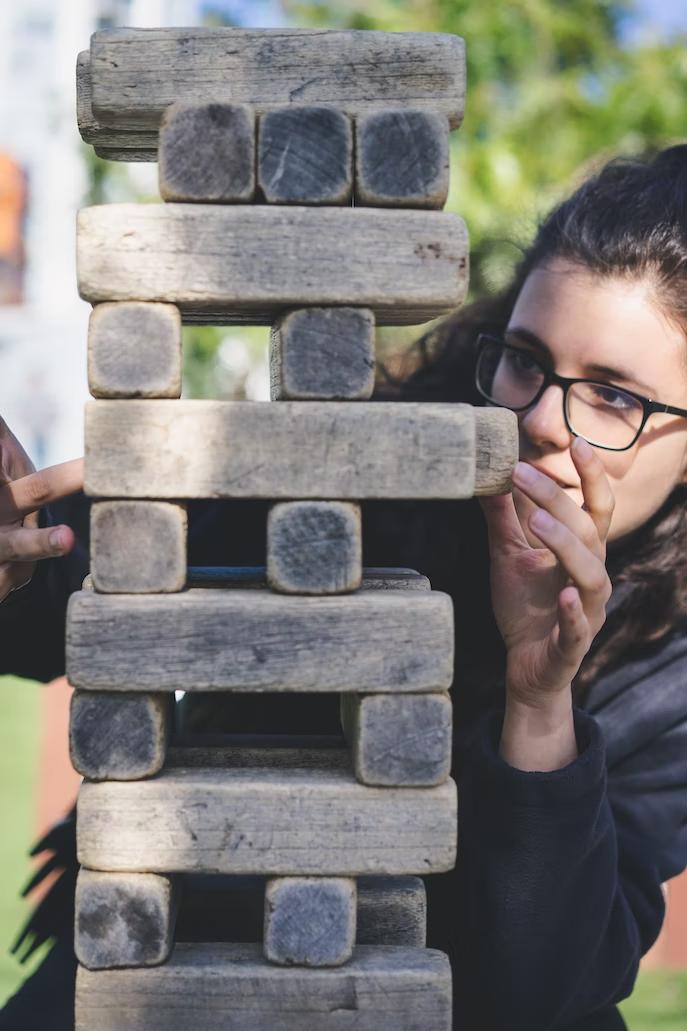
 Photo by:JohnMoesesBauan
Photo by:JohnMoesesBauan
THE TOP FIVE INDUSTRIES 1. TECHNOLOGY & COMPUTATIONAL THINKING 2. CAREGIVING 3. SOCIAL INTELLIGENCE & NEW MEDIA LITERACY 4. LIFELONG LEARNING 5. ADAPTABILITY & BUSINESS ACUMEN ?The illiterate of the 21st century will not be those who cannot read and write, but those who cannot learn, unlearn, and relearn.? - Alvin Toffler, writer and futurist
Panoramic Drawing o
 Photos Courtesy of Stephen Wiltshire
Photos Courtesy of Stephen Wiltshire
f713 Houston


Stephen 2021
Stephen Wiltshire and his Beautiful Mind

For over 30 years, the name Stephen Wiltshire has been synonymous with finely detailed, vigorous pen and ink drawings of the world's great cities.This young artist produces energetic street scenes and panoramas that are immediately recognizable to his fans and much sought after by private and corporate collectors Stephen's drawings ? often drawn from memory and at great speed ? are sketched on the spot at street level, drawn from the top of skyscrapers, or sometimes made after whistle-stop helicopter rides over the city.
Today Stephen is well known the world over His talent has been recognized with an MBE for art services; he has a thriving gallery in the heart of London, and the originals of his work fetch thousands of pounds. He regularly travels worldwide on private and public commissions, the most famous of which are his 15 city panoramas drawn from memory. Drawing street life and modern architecture have been Stephen's passions for as long as he can remember His extraordinary talent is even more incredible, considering that he was diagnosed with autism when he was three.Stephen, born in London in 1974, was completely mute as a small child and found it hard to relate to others. At age five, Stephen was sent to Queensmill School, London, where it soon became apparent that he communicated through the language of drawing. His teachers encouraged him to speak by temporarily taking away his art materials; eventually, he uttered his first words ? "paper" and "pencil" (just like Picasso) - but didn't learn to speak fully until the age of nine.
Drawing was Stephen's passion, and he was seldom to be found without pen and paper:animals, London buses, cityscapes, and classic American cars were all sketched with increasing maturity as the years passed. Once the school started to enter his art into competitions, news of his prodigious talent began to spread.Early fans included the late Prime Minister Edward Heath, who bought his drawing of Salisbury Cathedral, made when Stephen was just eight But Stephen gained public attention when the BBC featured him in the program 'The Foolish Wise Ones' in 1987 when he was introduced by Sir Hugh Casson (a past president of the Royal Academy of Arts) as "the best child artist in Britain."
"Do the best you canand neverstop."
- StephenWiltshire
After that, Stephen's artistic career developed quickly, and his first book, Drawings, a volume of his early sketches prefaced by Casson, was published that year. Stephen's reputation grew worldwide. His first visit to New York was a career highlight; he was entirely captivated by the city's atmosphere, streets, squares, skyscrapers, cars, and people To this day, the resulting New York sketches are among his favorites Visits to other cities Paris, Edinburgh, Venice, Amsterdam, Leningrad, and Moscow ? quickly followed, with Stephen attracting awed crowds wherever he stopped to draw. A second BBC documentary in 2001 showed Stephen flying over London in a helicopter and completing a detailed and perfectly scaled aerial illustration within three hours. This masterful drawing of a four square mile area included 12 historic landmarks and 200 other structures and is a perfect example of his natural artistry and an excellent eye for detail By now, Stephen's work was increasingly in demand worldwide. In 2005, he was commissioned to undertake vast panoramic drawings of ten world cities, starting with a 10-meter long canvas representation of the Tokyo skyline.Stephen subsequently took on commissions from Hong Kong where he produced a 10 meter long drawing of Victoria Harbour after just a 20 minute helicopter ride Rome, Frankfurt, Madrid, Dubai, Jerusalem, London, and ? his spiritual home New York. Further trips followed to Sydney and Shanghai in 2010, Brisbane in 2011, Singapore, Istanbul, Houston, TX,Mexico Cit,y and Doha, Qatar later.
In 2006 Stephen was recognized for his services to the art world when he was made a Member of the Order of the British Empire That year was also memorable as Stephen and his family opened a permanent art gallery in London's historic Royal Opera Arcade Today Stephen continues to amaze art lovers with his fresh, vibrant sketches of world cities, and wherever he goes, people are fascinated by his prodigious talent. Variously described by the media as 'the leading architectural artist in the world and 'the living testament to what can be achieved when the potential is realized and developed early on, Stephen enjoys accolades from all over the world But perhaps he would enjoy most the description of one journalist who also noted his enduring love of music: "he is a rock star in the art world." At one of his recent exhibitions in Singapore, he set attendance records by welcoming 150,000 visitors to his venue in just five days. His motto remains, 'Do the best you can and never stop'
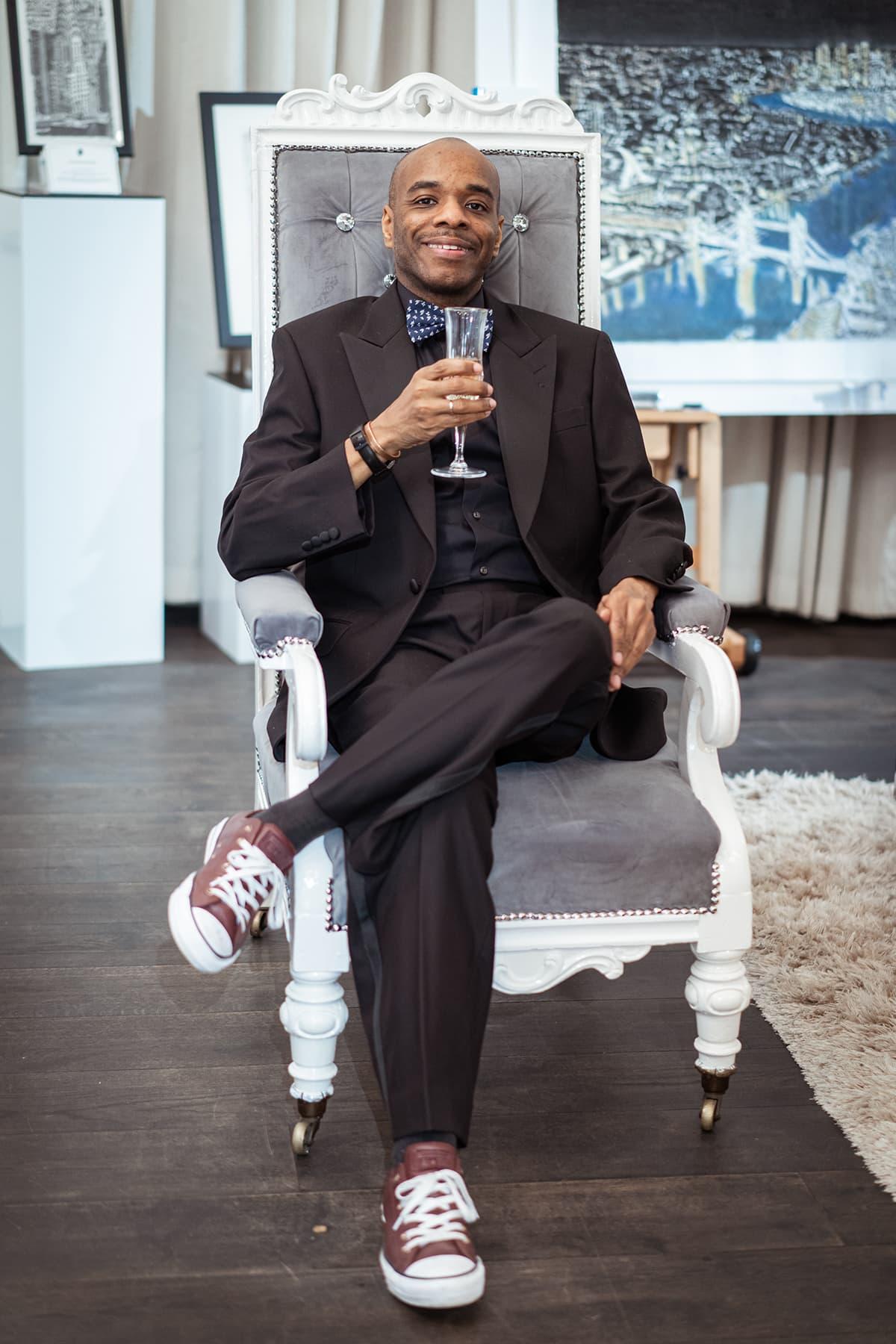
This is how I roll
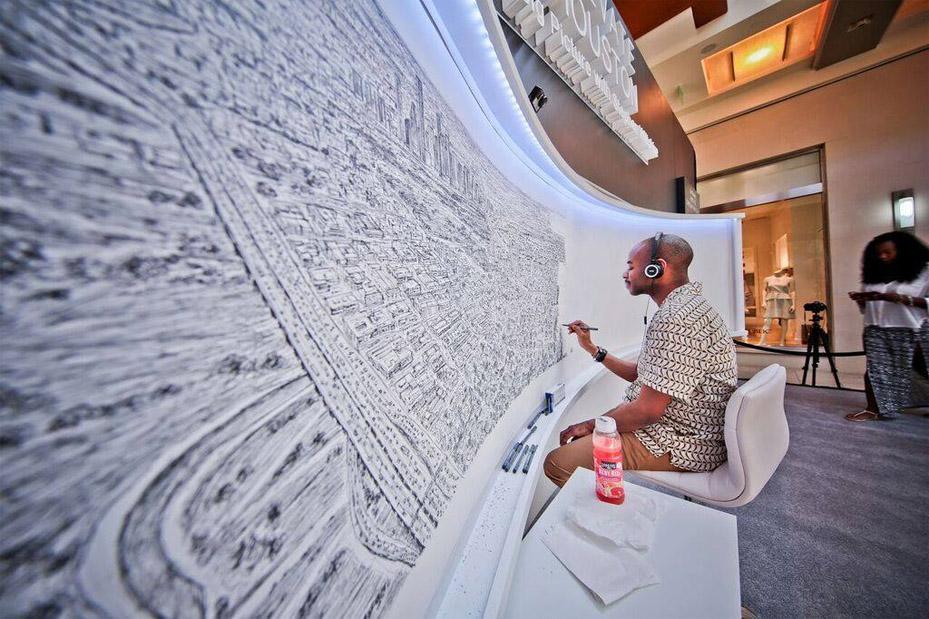
Much drawn in two days, Houston, Day 2

Houston signature moment
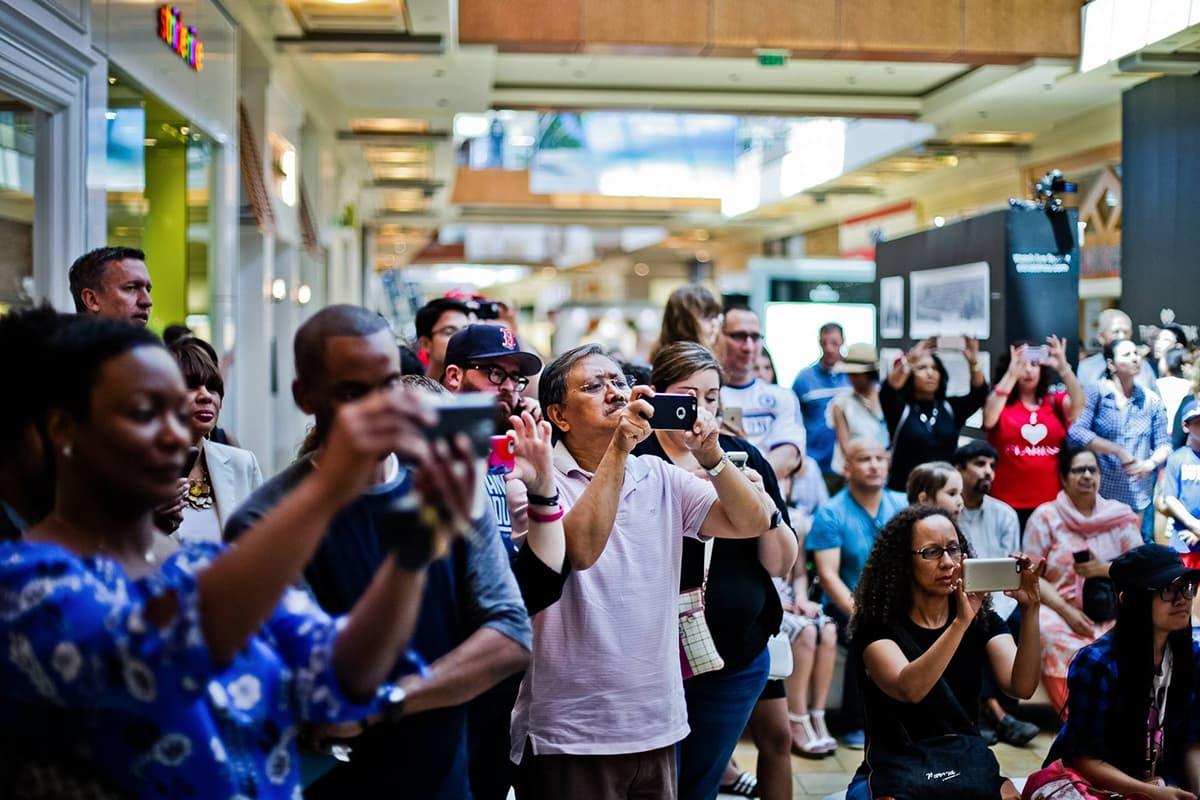
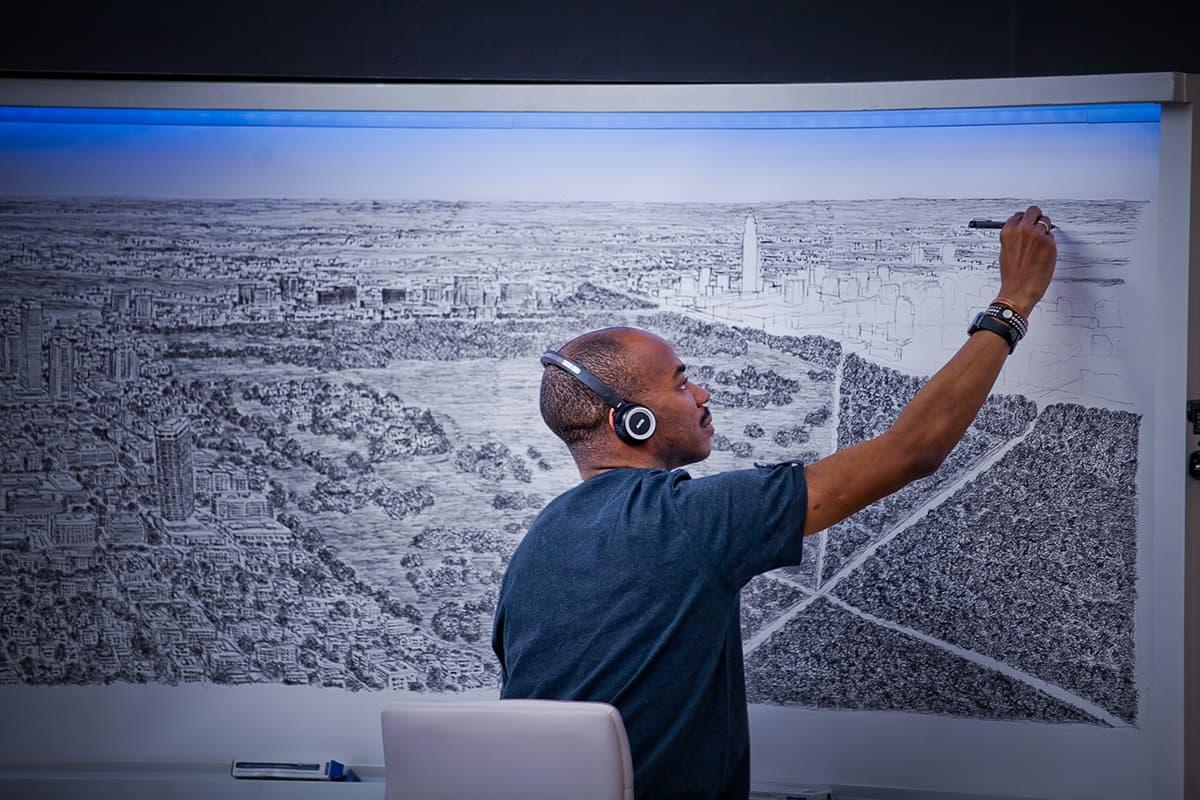
Drawing at The Galleria, Houston
ELEVATEHOUSTON (TX, US)
(19 - 23 Apr 2016)Stephen Wiltshire makes his debut visit to Houston in April to create the most spectacular panorama drawing of the Bayou City live at The Galleria.(Feb 2016)

Q & A with Stephen Wiltshire

How old were you when you started drawing?
I wasthree yearsold.Myearliest drawing wasrecorded at the age of five.
What type of subjects did you draw?
I started drawing animals,aeroplanesbefore buildingsand landscapes.
Why do you like drawing so much?
I enjoyit because it makesme feel happyand lotsof people enjoylooking at mywork.It makesthem smile.Theyalwayssayhow good mywork is.I feel veryproud.
Apart from using pen and ink,what other medium do you use?
I also use chalk pastels.I like to use it whenI add colourto mywork,it'seasyto smudge in.I also use oil paintsforlargerwork sometimes.I don't paint that oftenasit takestoo long forthe paint to dry.I muchpreferpen and ink.
NOTREDAME,PARISOpen Edition Prints of the Original Drawing Notre Dame, Paris, created and hand drawn by the artist
You are always listening to music Why?
It makesme feel good,it helpsme to relaxwhile I am working.
What type of songs do you listen to?
I like mostly60s,70s,80sand 90smusic,rock nroll,motown,funk,soul,rnb and also pop.
Who is your favourite artist? Why?
Richard Estes.I like hiswork because it isveryrealistic and theyare American scenesthat I canrelate to astheyare one of myfavourite places.
When you are not drawing, what do you do?
I like watching sitcomsontvinthe eveningsand listening to the Top 40 onthe radio at weekends. SometimesI dance to get some exercise and I like going shopping withmyfamilyonmydayoff.
What are your favourite buildings?
I have several favourites,Empire State Building in New York,I also like CanaryWharf inLondon.They are modernblocks.
What is your favourite colour?
Blue.
How often do you draw?
I oftendraw,nearlyeveryday.
Having your own gallery in the heart of London is a real achievement. How does it make you feel?
I feel proud of myself,lotsof people come to visit mygalleryfrom all overthe world and buymy artwork,lotsof school groupsalso come to visit.I come to mygallerytwice a week and meet people and signmyautograph.
You seem to get filmed quite a lot. Do you ever get shy or nervous in front of the camera?
No,I don't get nervousat all.I feel veryrelaxed and comfortable.Sometimesfilming can take a few hoursorall day,but I don't mind,I have a lot of patience.
If you did not draw, what do you think you would do instead?
I think I would alwaysdraw because I started so young.It'swhat I do best.I used to make a lot of mistakeswhenI wasyoung,but I have had manyyearsto practice,so I am a veryconfident artist now.I have had time to mature and grow with mywork.
Through your journey with the media and travelling to various countries, have you met any famous people?
Yes,I have met DustinHoffmanand wasonthe front coverof You Magazine.I have also met Michael Crawford at the 'Phantom of the Opera',he showed me how to put hismake-up on.I met Junior Giscombe,he used to be a singerand BeverleyKnight at the HiltonHotel forGibsonGuitarevent in London.I have also met Prince Charlesat Buckingham Palace whenI got myMBEforservicesto Art.
I have read that you play the piano How long have you been playing?
I have beenplaying forover15 yearswithmypiano teacherEvie.She isgreat.I also practice at home at the weekends.
What is your favourite food? Chicken.
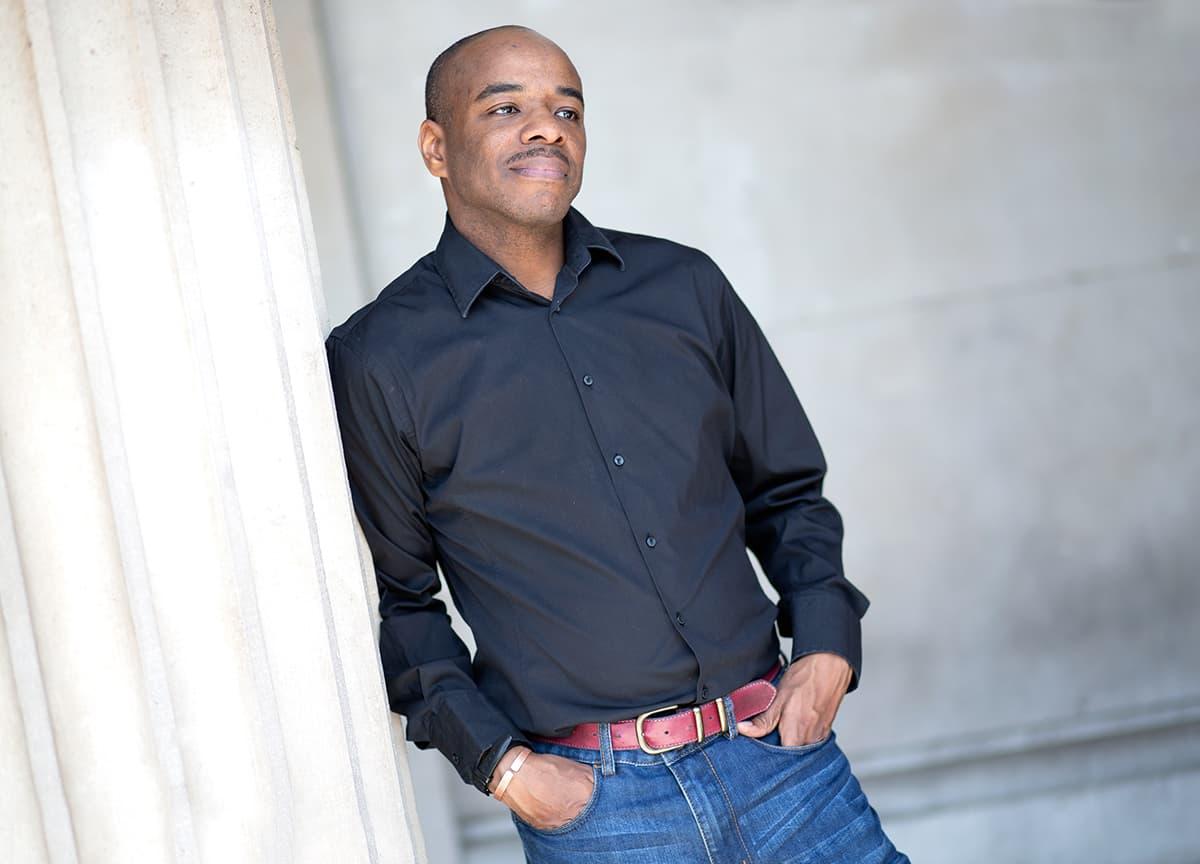
What has been the longest time for you to finish a piece of artwork?
Eight days,that wasin Tokyo whenI did a 10 metrespanorama from memory. Thisisthe longest panorama of all the onesI have done.
What has been the shortest time for you to finish a piece of artwork?
Two minutes,a quick sketchof a bus,also Statue of Liberty.
You were very young when your father died Do you think about him sometimes?
Sometimes.I know it made myMum feel verysad and she misseshim a lot.We have manyphotosin ourfamilyalbum with myDad photographed with me and and mysisterAnnette.
You are very much the globetrotter What is the best thing about travelling?
Coming home to the UK.I enjoytravelling verymuchand seeing different styles of architecture,but aftera while I missmyMum and mybedroom,all my favourite Americanclassic carsare in myroom.
How did you realize that you had this talent?
Myteachersat Queensmill School noticed that I drew LondonLandmarksfrom memory.Whenwe came back from the bustourI started to draw what I saw. Theyused to entermydrawingsinto competitionsand I won them all.
When you fly over a city and you memorise it, how long can you keep these images in your mind?
I canmemorise anycityI like,buildingsoranything really.I canstill remember buildingsI saw whenI wasveryyoung,like five orsixyearsold.
Words of inspiration?
Do the best you canand neverstop.
What inspires you?
I like buildings,especiallymodern cityscapesand street scenes.I love the chaos and the orderof avenues,bright lightsof moderncities,the rush hourand the people.I think it isall exciting.
Tell us your daily routine
I alwayshave cereal forbreakfast and choose what I want to wearforthe day.I travel to mygalleryonPall Mall and draw there in mystudio a few daysa week. SometimesI work oncommissionsand give interviewsforfilm crews.Alot of people come to see mywork inthe gallery.SometimesI get invited to events and I get to wearmydinnersuit.I oftentravel abroad aswell.OtherdaysI go to mycollege to use theirprint room working onnew ideas.
What do you consider the highest and lowest moments of your art career?
WhenI wasa young boyit wassometimesfrustrating that I could not express myself and it wasveryhard.I am a grownmannow and wasveryproud of myself whenI met Prince Charleswho gave me anMBEforservicesto the art world.He isa verynice man.



Drawn from Dawn Houston Panorama Complete
Stephen, are you left handed or right handed?
I am right-handed.
What are your favourite films? Why?
RainManand SaturdayNight Fever.Rainmanbecause of DustinHoffman.He isa great actor,makesme laugh, especiallywhenhe says'I am anexcellent driver!'.Saturday Night Feverbecause JohnTravolta starred in it whenhe was young.I like the music from the Bee Geesand JohnTravolta's dance moves,whichI sometimesdo whenI am at home.
When you travel what are the most important things you must take with you?

Mypencil case with myfavourite pensand pencils,rubberand myLondondouble deckerbuspencil sharpener,also my camera,so I cantake lotsof photosof all myfavourite things. Mydiary,myiPad and myiPhone.
Where do you see yourself in 10 years?
I will keep doing what I do best,drawing.I might evenget betterbytime.I would like to visit some placesI have not been and one daywould like to have myown penthouse in New York.


http://adhdsocphils org/
JEFF MILLER POTENTIA
Founder and CEO THRIVING ON DIVERSITY

Jeff Miller's life is the perfect example of an all American dream A beautiful family, an excellent job, and a better lifestyle than most His life changed when his son was diagnosed with autism when he was six.For a parent and a father, this is a traumatizing experience, but his true calling was just starting
Giving up was not an option. He learned everything about his child's condition. He never left a stone unturned until he eventually understood how neurodivergent individuals could live and survive in the same environment as normal kids. He practically walked in their shoes to gain a broader perspective of life from their point of view In other words,he walked the walk
He founded Potentia with the primary objective to provide the workforce to companies staffed by neurodistinct individuals across the globe. Ever since, it has become his one true calling, his mission in life. Adversity became a window of hope for the neurodiverse communities, and he has never stopped


...and hismissionmade possible
Neurodiversity sounds like a very challenging word for those who are not yet fully aware of it What are your thoughts about the workforce for the neurodiverse communities?
Neurodiversity is a relatively new term for cognitive differences that have been around forever. People who are autistic, ADHD, dyslexic, PTSD, etc. may process information differently. They also make up more than 25% of the population and often have tremendous strengths, like hyperfocus, that can be incredibly beneficial in work environments.
A vast majority of organizations are not open to hiring neurodiverse individuals How were you able to create a niche?
Actually,we find that once theysee the data,most companiesembrace the concept of hiring more neurodistinct (ND) individuals. They also realize they have a great many ND employeeswho don? t disclose forfearof being stigmatized.
Are there specific specializations when it comes to hiring neurodiverse applicants?
Most companies come to us for tech talent because (a) they need it and (b) they associate neurodiversity, to the extent they are aware of it, with STEM (science, tech, engineering or math) roles. They are surprised to learn we have more non-STEM candidatesand theyare succeeding indozensof roles.
 Here's our conversation with Jeff Miller, Founder and, CEO of Potentia
Photo byPawel Czerwinski
Here's our conversation with Jeff Miller, Founder and, CEO of Potentia
Photo byPawel Czerwinski
Where do neurodiverse individuals typically excel? Is there a training program for them?
ND candidates excel in ND-friendly environments ? as do most candidates generally. Things like clear instructions and mentor programs are very helpful for ND?s but really benefit everyone.
The landscape for the workforce is changing, what do you foresee coming in say 5 or ten years?

Covid has really changed the landscape for employers and employees alike. More employers are asking ?what is truly essential to this job being performed well?? Companies are becoming more flexible on things like location and college degrees in order to get the skills they most value. Employees are much less likely to stay with companiesthat are inflexible oraren? t a core valuesfit. These trendsshould continue.
How can governments help?
Governments ca play a key role in helping ND?s to maximize their potential. It starts with good education that fosterslearning and creativity. Governmentscan then invest to help their people to gain the skills they need. This is a much smarter investment than just relying on public assistance. Both play a role, but we want to see healthy individualsreaching theirpotential and contributing to societyina varietyof ways.
Do you retrain people who hire them?
We prefer that most of our employees are ND themselves, so we certainly practice what we preach. Those individuals then train companies on what neurodiversity is, why it's such a business winner, and how to implement it smartly. These companies thenbecome betterhomesforcurrent ornew employees.
What first few steps can you suggest for organizations to consider if they are exploring the idea?
First, do a little research. There are companies, like Potentia, that really focus on this area and can share a lot of best practices. Next, look to create a culture where ND employees can come forward and support each other. They are your best teachers but many hide their diagnoses. If that is happening to you, there are reasons why and you?ll want to take concrete stepsto be more inclusive and benefit from it.

They say that to understand certain situations, you have to experience them yourself and relate to them. Does this apply to you?
I used to run a global staffing company. I started Potentia because my son is autistic and saw the immense potential he has. With that said, everyone is different, including autistics. Adiagnosisisjust a starting point,neverthe conclusion.
Families have a significant role in supporting neurodiverse individuals and times are hard, what would be your message to organizations, communities, and HR practitioners?
Individuals need on-the-job support, but also support outside of work. Family, friends and organizations can play a huge role both in helping during tough times but also encouraging people to stretch. You neverknow what someone iscapable of if theyare encouraged and supported. Most ND?sreallytake off in their careerswhen theyfind a passion and turn it into a related vocation. But getting there is a journey that requires some trying, failing and trying again. Keep yourlevel orsupport and yourexpectations highand you maysee some amazing results. - PremierMagazinePH
Potentia?s Founder and CEO, Jeff Miller,has spent over two decades in leadership roles in the human capital industries.He was president of a global workforce firm that provided over 2,000 engineers,and field workers to industries including energy, aerospace, manufacturing, and technology.Jeff had full responsibility for the day to day operations of this international firm, reporting to the board of directors, and completed four acquisitions during his tenure.
What Is Neurodiversity?
Over 25%of today?s adult population is neurodiverse.Yet most businesses miss the opportunity to leverage this talented community fully. Many people focus on the difference and ignore the incredible strengths these individuals bring.Organizations that have invested in hiring Neurodistinct professionals report lower turnover, higher productivity, and improved employee engagement. https:// potentiaworkforce.com/

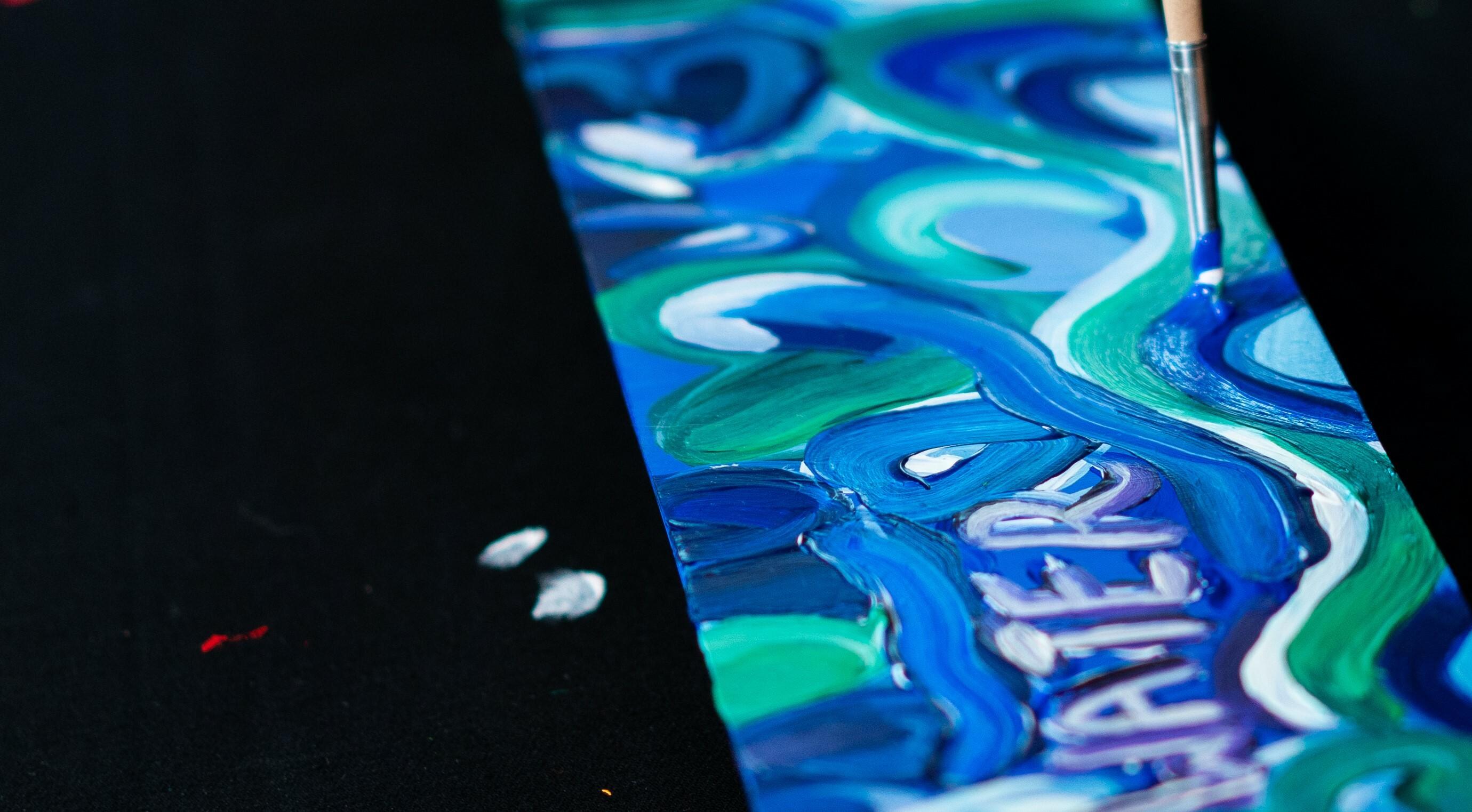
ROLLS-ROYCEMOTORCARS AND WORLD-RENOWNED ARTIST, SACHA JAFRI, ANNOUNCEROLLS-ROYCE PHANTOM ?THESIXELEMENTS? ©Rolls-RoyceMotor Cars

Rolls-RoyceMotor CarsDubai and Rolls-Royce Motor CarsAbu Dhabi, are inspiringgreatnessat itsbest bycollaboratingwith theDubai-based world-renowned contemporaryArtist Sacha Jafri for theinception of ?TheSix Elements?Phantom.
World renowned artist, Sacha Jafri, crafts six hand painted Galleries for unique one of one Phantom Series II motor cars, themed around the Six Elements
Expressed aim of collecting $1 million for charities spanning three sectors: Education, Health, and Sustainability
- ??The Rolls-Royce That Keeps On Giving?? : each Phantom Series II will have a unique NFT embedded within it, which can be sold to raise additional funds raised for charitable foundations
"?Phantom ?The Six Elements?is an idea that was born during an inspiring phone call between Rolls-Royce Motor Cars Middle East & Africa and the boundary-pushing creativity of Sacha Jafri. Through the collaboration between the Rolls-Royce dealer partnersin the UAEand a contemporaryartist beyond compare, art and craftsmanship have converged into a deeper, breathless expression of matter and meaning.
?Raw elemental power, encapsulated within pure artistic expression. ?The Six Elements? elevatesthe nascent legacy of the Phantom Gallery, commissioning an artist of utmost acclaim to distil the most potent componentsof nature:Earth, Fire, Wind, Water and Air ? alongside a ?sixth element? : Humanity ? within the best car in the world.
?We understand that Rolls-Royce motor cars are designed for the few, but we are mindful of the many. That?s why Phantom ?The Six Elements?will raise $1 million for charity. Beyond that goal, the six utterly unique Phantoms will keep on giving beyond the initial charitable donation, thanks to a unique NFT initiative, providing even more valuefor thecause.? César Habib, Regional Director, Rolls-Royce Motor Cars Middle East & Africa
 ©Rolls-RoyceMotor Cars
©Rolls-RoyceMotor Cars
Rolls-Royce Motor Cars Dubai and Rolls-Royce Motor Cars Abu Dhabi, are inspiring greatness at its best by collaborating with the Dubai-based world-renowned contemporary Artist Sacha Jafri for the inception of ?The Six Elements?Phantom
These six one-of-one Rolls-Royce Phantom Series II motor cars will each feature a unique, painted Sacha Jafri Gallery, inspired by the one of the five elements: Earth, Water, Fire, Wind and Air, with Humanity as the ?sixth element?The project has the expressed aim of raising $1 million for charity, with associations to be announced later this year The chosen beneficiaries will be Humanity-centric, spanning three sectors: Education, Health, and Sustainability
Selected for his inimitable vision, style and use of colours, Jafri is crafting a unique Gallery for each Phantom Series II, themed around the Six Elements The principle of adding Humanity as an element builds on the ethos of the British artist?s works around the five traditional elements The underlying message is the need to reintroduce a sense of humanity to the world and to find balance within ourselves
For Sacha Jafri, each of the elements evokes different emotions, spirit, energy and purpose Fire represents passion and belief Fire is balanced by earth, which represents grounding and roots Air is the essence of life, enabling us to breathe Wind enhances our feelings of freedom, whilst Water, supports our lyricism and fluidity Humanity brings love, embrace, and the linking of souls
?ThesixRolls-RoycePhantomswill embodytheemotion of each elemental force. Theartistic journeybeginsand endswith emotion and intention, fuellingmyinspiration to create thecolour paletteof the?SixElements? . Earth, Fire, Wind, Water and Air areenhanced bytheaddition of a ?new element? , Humanity?theveryessenceof life itself.
Rolls-Royceisa brand of intention, excellence, power, detail and passion ?a brand that has been on a similar journeyto myown. It hasset new levelsof achievement, with pioneering accoladesyet to besurpassed. Byembracingempathy, weareableto reconnect thespirit of our world, in connection with our Elementsand thesoulsof not onlytheindividual, but of thevery idea of universal consciousness.
Weareembarkingon a journeythat aimsto continuouslyfulfil thosevalues, keepingour intentionspure and driven, eternally. Thiscommission isindicativeof theseprinciples, not only incorporatingart for thesakeof aestheticinspiration, but also a nurturingof thesoul, an upliftingof thespirit, and theembodiment of a true charitablecause.?
Sacha Jafri, Art ist

©Rolls-RoyceMotor Cars
THE ROLLS ROYCE THAT KEEPS ON GIVING
The Rolls Royce Phantom ?The Six Elements?motor cars will also feature a unique digital element. The marque is simultaneously launching "The Rolls Royce That Keeps on Giving?NFT initiative, which includes six individual flythrough animations.
Each time any of the six NFTs are traded, a royalty of 20%will be donated to the chosen charity. The six distinct one off NFTs are linked to each of the six Phantoms, however, owners can sell their NFT separately if they choose to do so. These NFTs will be uniquely embedded within the glove compartment of each Phantom Series II, enabling each of the six owners to view their NFT experience whilst sat within their car.
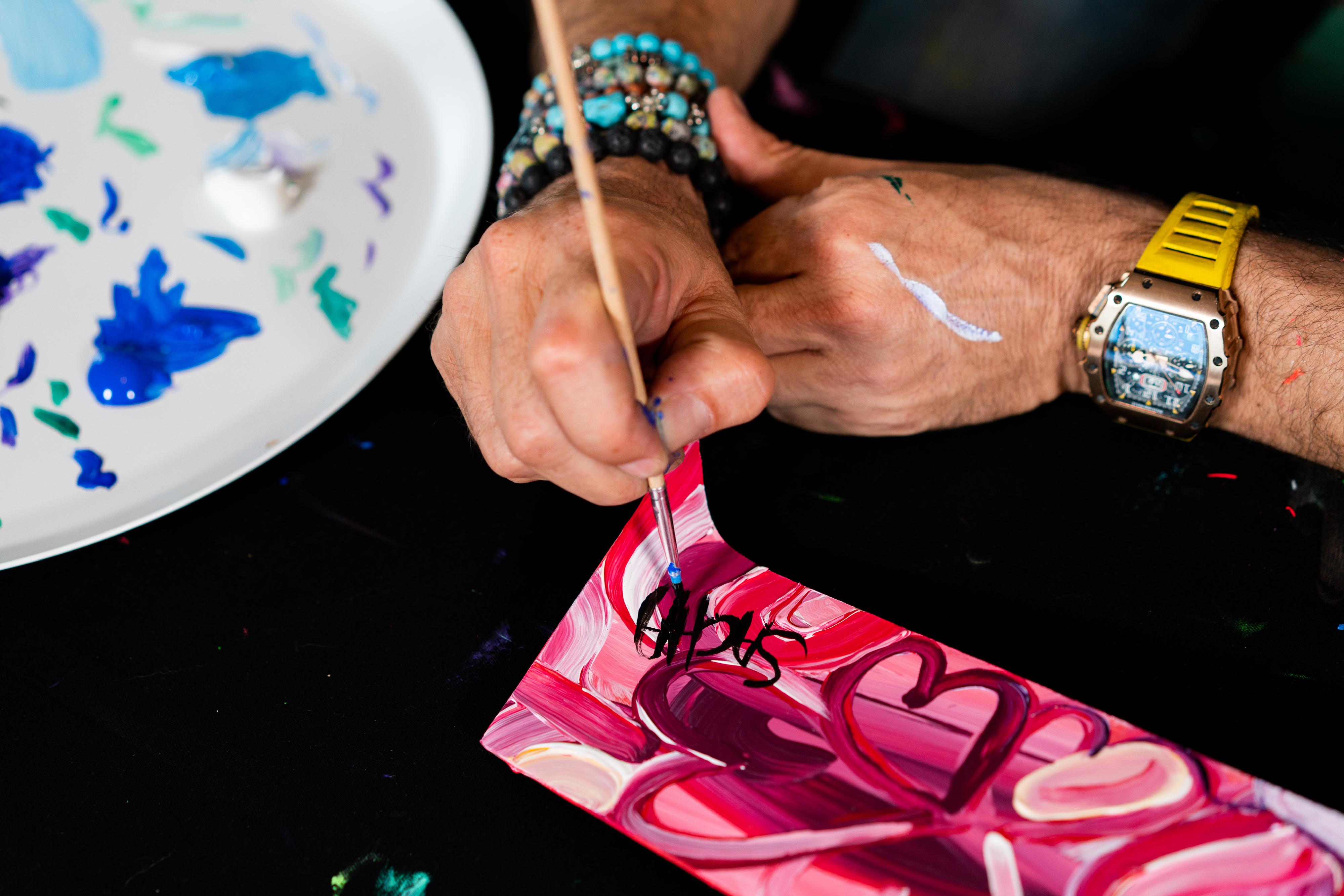

 ©Rolls-RoyceMotor Cars
©Rolls-RoyceMotor Cars

PremierR ecommendstheClassics
In 1939, newly created British intelligence agency MI6 recruits Cambridge mathematics alumnus Alan Turing (Benedict Cumberbatch) to crack Nazi codes, including Enigma -- which cryptanalysts had thought unbreakable. Turing's team, including Joan Clarke (Keira Knightley), analyze Enigma messages while he builds a machine to decipher them Turing and team finally succeed and become heroes, but in 1952, the quiet genius encounters disgrace when authorities reveal he is gay and send him to prison.
The Imitation Game is a 2014 American historical drama film directed by Morten Tyldum and written by Graham Moore, based on the 1983 biography Alan Turing: The Enigma by Andrew Hodges. The term ?imitation game? comes from a paper Turing wrote in 1960 called ?Computing Machinery and Intelligence,? where he asks ?Are there imaginable digital computers which would do well in the imitation game??Turing then goes on to describe a game that is really a test to determine if computers can actually think

In new era, Ray-Ban owner extends partnership with Armani
 © Devin Avery
© Devin Avery
MILAN, Sept 14 (Reuters) Eyewear maker EssilorLuxottica(ESLXPA)extended its partnership with Armani in a sign of continuity on Wednesday as it held its first capital markets day since the death of chairman and main shareholder Leonardo Del Vecchio in June.
The owner of the Oakley and Ray-Ban sunglass brands extended its licensing deal with Giorgio Armani's luxury group for a further 15 years.
The partnership dates back to 1988 when Del Vecchio and the renowned fashion designer teamed up to bring Armani branded glasses to a global market.The move is widely seen as driving a revolution that helped to turn glasses into a fashion accessory rather than a medical device
Del Vecchio, who founded the frame manufacturer Luxottica in 1961and built an industry leader that merged with French lens maker Essilor in 2018, died three months ago at the age of 87 read more
His right-hand man and chief executive Francesco Milleri immediately added Del Vecchio's role as chairman to ensure a smooth transition for a group that employs 180,000.
"In keeping with Leonardo Del Vecchio's vision,with Armani we inaugurate a new long-term partnership model that will anchor us in the same spirit for many years to come,"Milleri said in a statement.
COST PRESSURES
The company also said it was dealing with the impact of rising costs,in common with other businesses."Energy inflation is impacting strongly (in)EMEA which is important for luxury made in Italy,"Chief Operating Officer Giorgio Striano told analysts

The company had some protection because many of its frames and lenses were actually produced outside of Europe in areas where energy inflation was more contained, but he added that wage inflation was an issue everywhere
However, Milleri said the company was not transferring higher costs to consumers through price increases because of efficiency measures it was taking Milleri also took the reins of Del Vecchio's 27 billion euro holding company. In addition to a 32%stake in EssilorLuxottica, the Delfin holding is a major shareholder in Paris-listed Covivio (CVO.PA)and a key investor in three top Italian financial companies Mediobanca (MDBI.MI),Generali (GASI.MI)and UniCredit (CRDI.MI).read more
After sound revenue growth and strong margin expansion in the first half of the year, EssilorLuxottica confirmed in July its medium term targets for an adjusted operating profit between 19%and 20%of revenue by 2026,up from 17%in 2021
?ForyearsI caused myself so muchpainbywanting to be what myego told me I should be.EverydayI fought myself because I didn? t feel right.I skipped school everydayfora year,because the thought of going made me sick to mystomach.Being around people,evenmyclassmatesI?d knownforyears,filled me withfear.I didn? t know what waswrong withme,I went to a child?spsychologist who told myparentsthat I wasjust ?spoiled? .
Afew yearslater,at around 15 yearsold,I got depressed and wanted to kill myself.I played withthe thought everyfucking day.Everydayat fucking fifteenyearsold I thought of how and whenI should end myown life.I went to a psychiatrist withmymom,who diagnosed me withAsperger?s syndrome almost onthe spot and saved mylife byputting me on anti-depressants.
TodayI?m the luckiest girl in the world.I wouldn? t change mylife for anything,I am so grateful foreverysingle personinmylife and am filled withlove bythe thought of them,and heartbreak bythe thought of ever hurting orleaving them.
I?m writing thisbecause I know I am not alone.Boysand girlsaround the globe are living inconstant darkness,children,who are living with something no one understandsand theycan? t explain.You are not alone. Trust me,you are neveralone.You are just the wayyou are supposed to be. I know that life can seem tough,but trust me it isbut a passing moment. The strengthto go onisso fucking worthit.Please seek help if you need it, no one will judge you.And whydoeswhat someone else thinksof you mattermore thanyourownexperience?I love you.Read the Untethered Soul? . - Nina Marker,most wanted Danishmodel
Source:Elite Model ,Italy


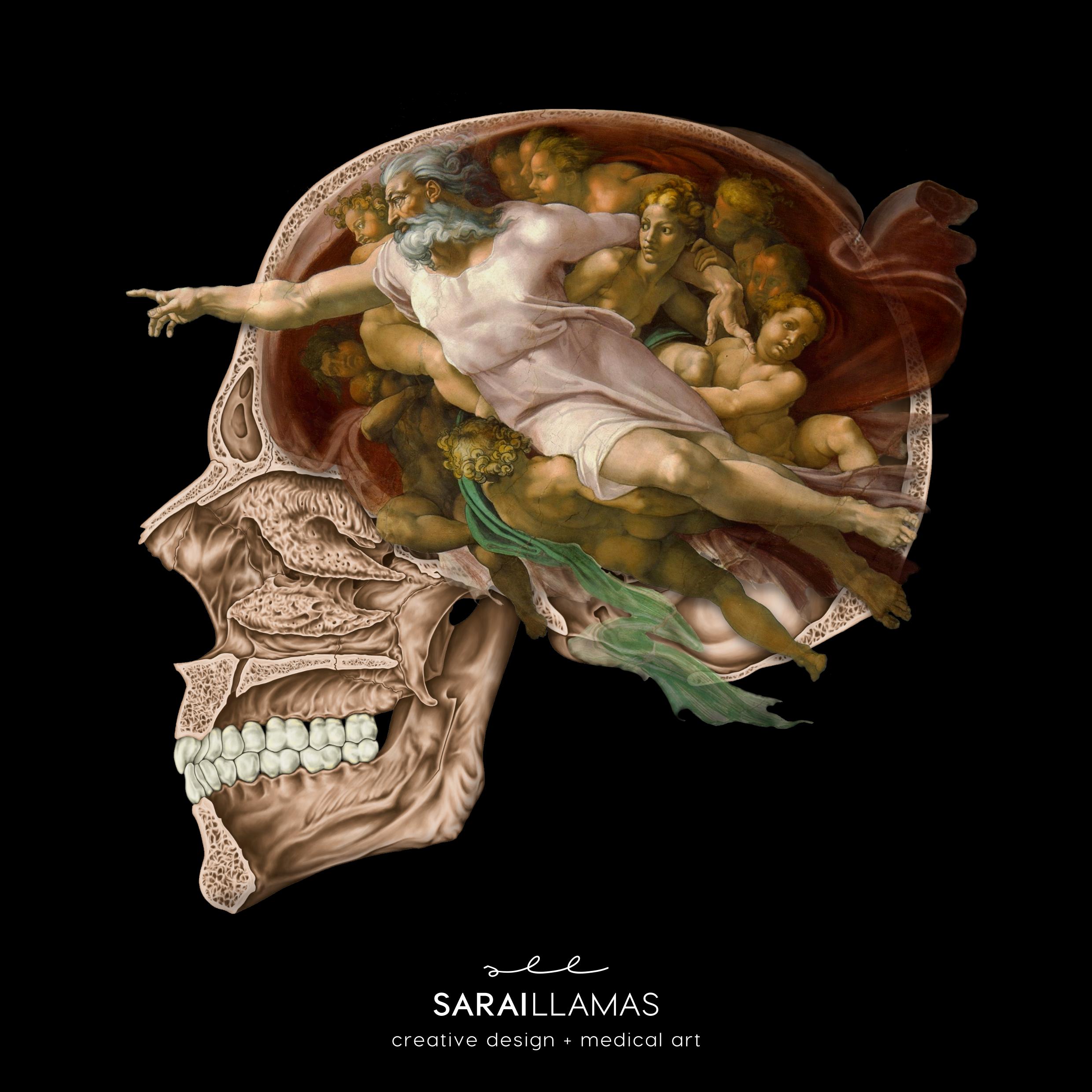
Premier SAPERE AUDE SEPTEMBER, 2022 ISSUE ISSN2799-0702 Vol 2 9
